

The First World War, 1914-1918, was the first truly global conflict. A result of militarism, alliances, nationalism, imperialism, and sparked by assassination, this war saw great strides in technology and efficiency--and a significant number of casualties. From the ports of Africa to the trenches in France, WWI forever changed the face of modern warfare and the future of twentieth century politics.

Army uniform and gear of the typical infantryman. Over the wool uniform jacket is a cartridge belt, combat suspenders, and slung gas mask and grenade bag. On the belt is a medical pouch, trench knife, and bolo knife.

WWI pack setup for an infantryman, featuring M1910 haversack, cartridge belt, canteen, bandage pouch, and shovel
Layout of gear as carried by the typical infantryman. This includes cartridge belt, pack, entrenching tool, M1917 rifle, and bayonet.

1917 "Eddystone" rifle, which was the rifle used in greatest numbers by US troops serving in Europe. It is the US-produced version of the British P1914 rifle. This variation dates from 1917 and is complete with bayonet.
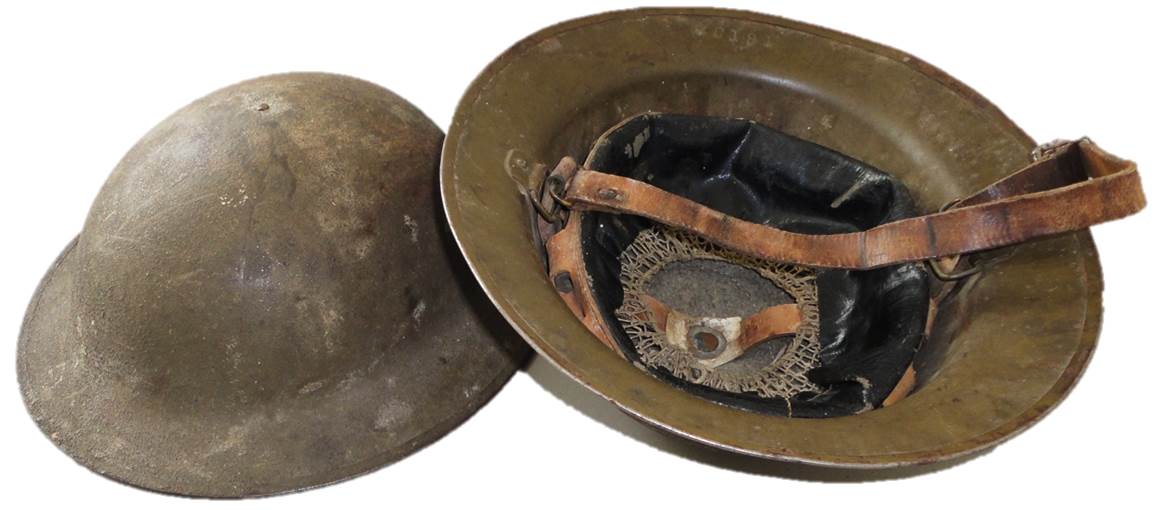
M1917 steel helmets. These were copied from the British design and designed to protect the wearer from falling debris. The US, like most countries, entered the war wearing caps in the field, but trench warfare quickly made clear that head protection was necessary.
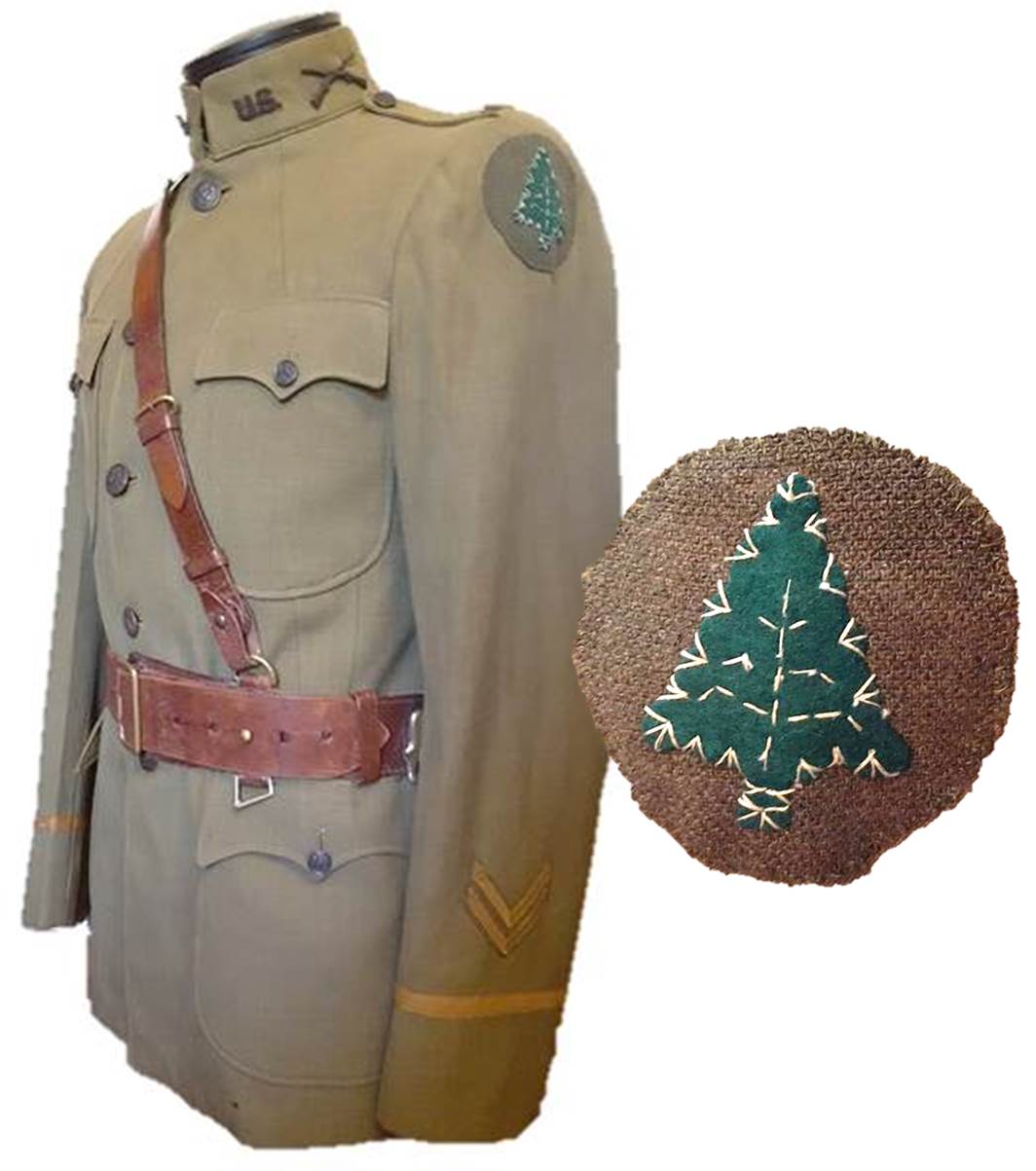
A nice example of a tailored officer's uniform jacket. This example is named to a Lieutenant in the 91st Infantry Division. It is dated 1918 and the sleeve stripes indicate a year overseas. Also displayed is a non-regulation Sam Brown belt--it was popular with overseas officers but never prescribed for official use.
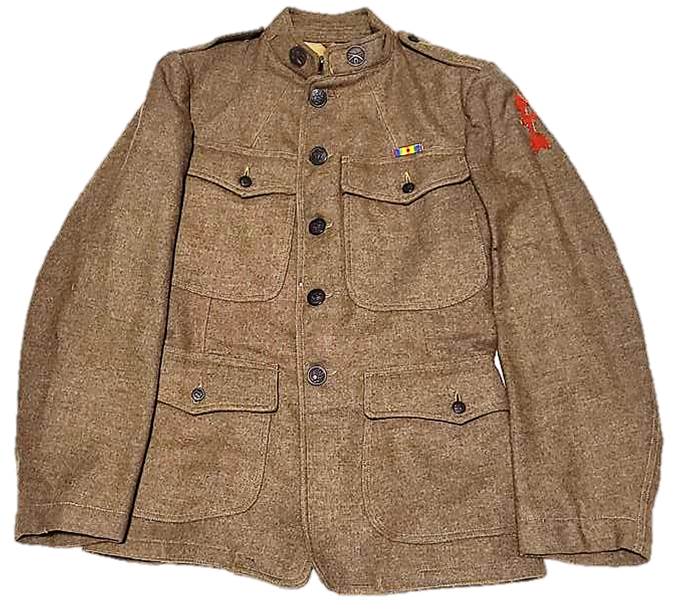
32nd Infantry Division uniform jacket. The 32nd was raised largely from units from Wisconsin and Michigan. The shoulder patch, a red arrow through a line, represents their success in breaking through enemy lines in battle.
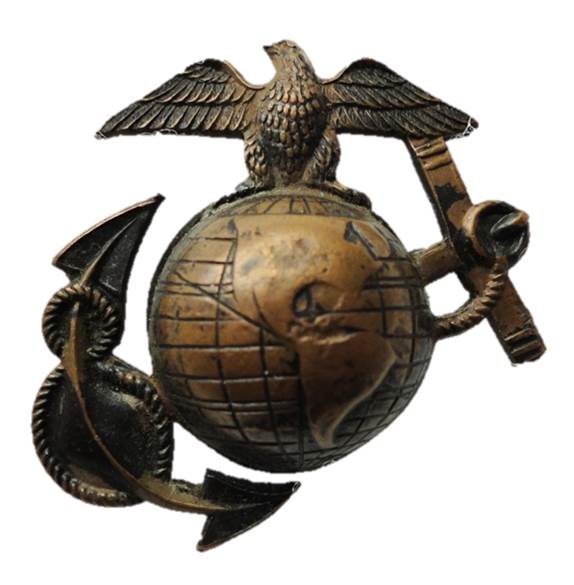
A "Eagle-Globe-Anchor" (EGA) cap insignia of the United States Marine Corps. Marines fought with distinction in France and would wear this emblem on their caps and attached to their helmets.
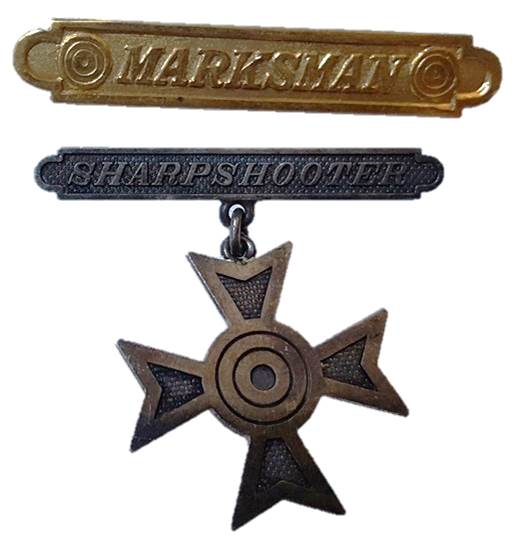
WWI-era US Marine Corps marksmanship proficiency badges
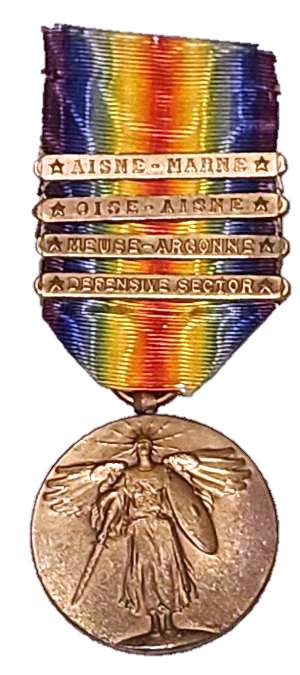
The US Victory Medal to the 32nd Infantry Divisionwith four campaign bars.
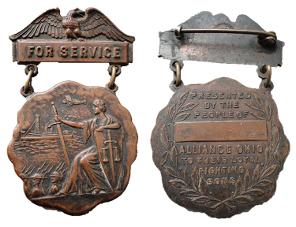
Many towns and states issued their own commemorative medals to returning veterans. This particular one is from the town of Alliance, Ohio.

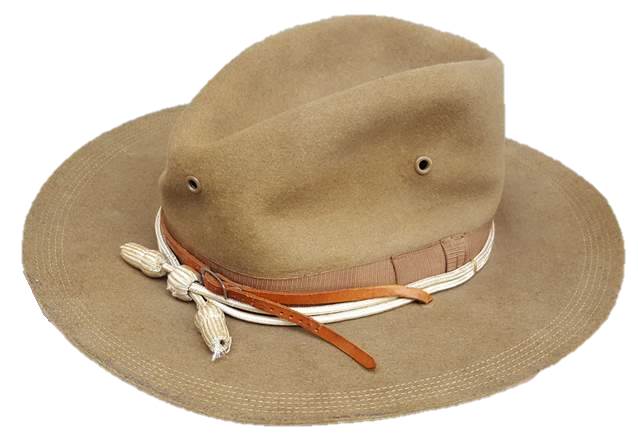
Model of 1911 campaign caps as worn by US soldiers. The top example has maroon and white cords for the Medical Department and the lower example has white infantry cords worn through 1917.
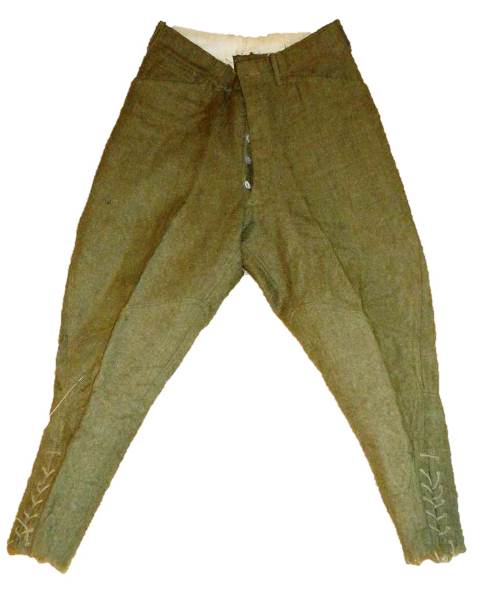
Wool uniform breeches worn by US soldiers. They laced just below the knee and were worn with leggings or puttees to protect the lower leg.
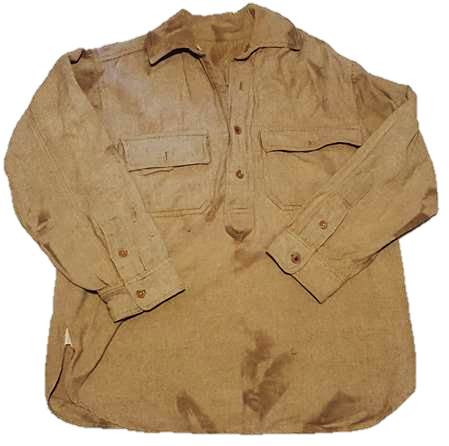
Army-issued wool flannel undershirt.
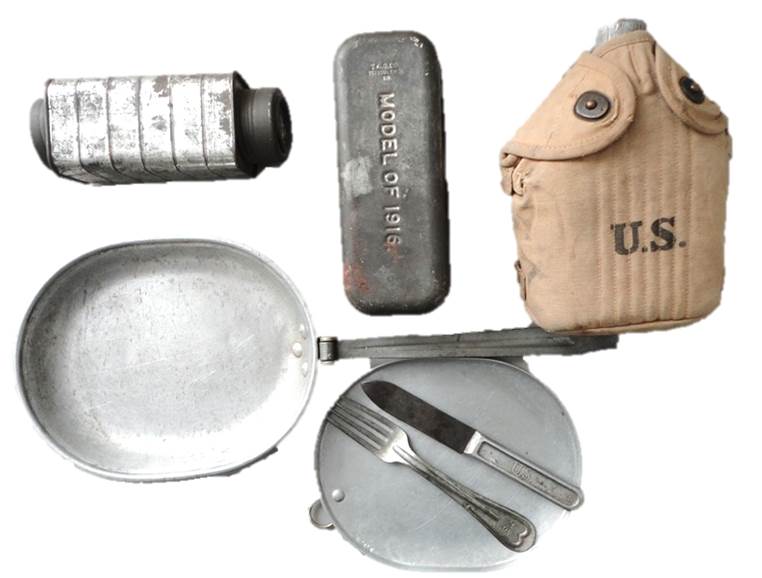
A soldier has to eat! Above is an assortment of items necessary for eating and as carried by each soldier. At top is a condiment tin that would carry coffee, tea, and salt; at center is a bacon ration tin; at right is a canteen. Lower item is the "meat can" (mess kit) with fork and knife.
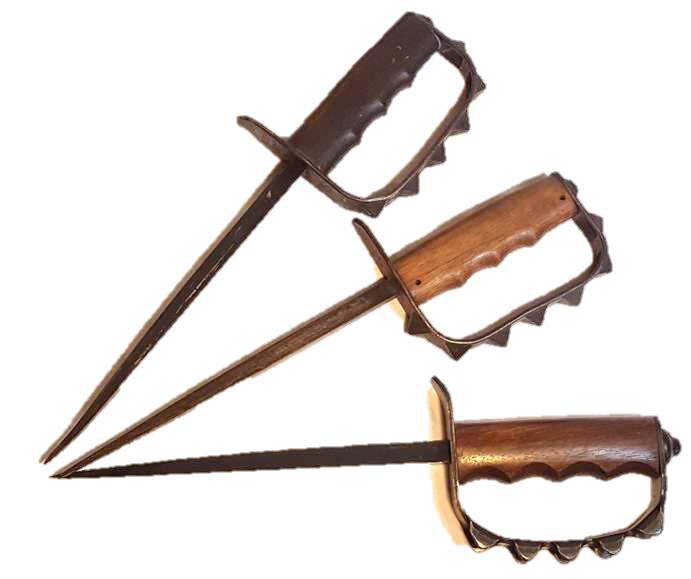
Three variations of the M1917 trench knife, as issued to soldiers in the trenches.
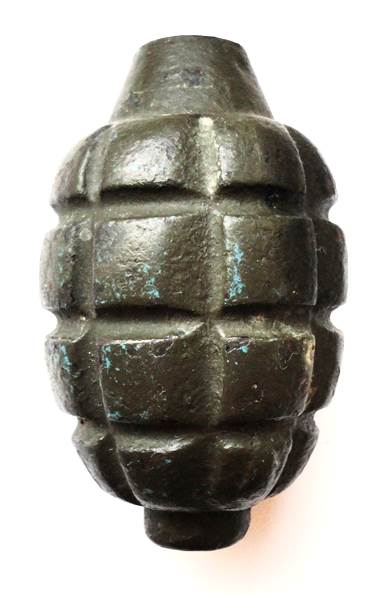
Body of a Mk I fragmentation grenade. This was the first hand grenade developed by US forces in WWI and was used 1917-1918.
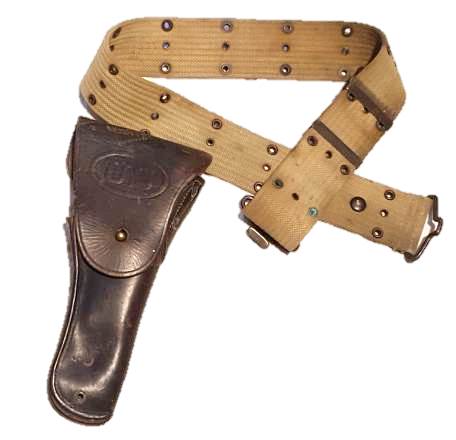
M1910 pistol belt and 1917-dated leather holster.
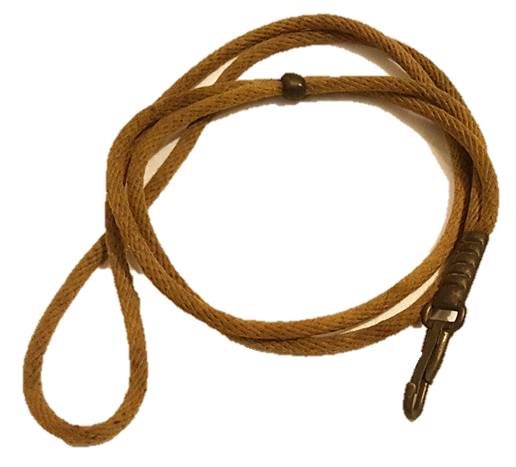
Lanyard for pistols. This example is dated 1917.
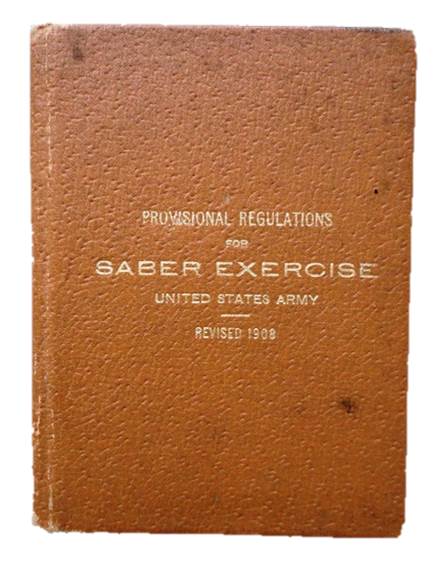
Manual for fighting with the saber. Cavalry were still issued with swords in WWI and up to the start of WWII.
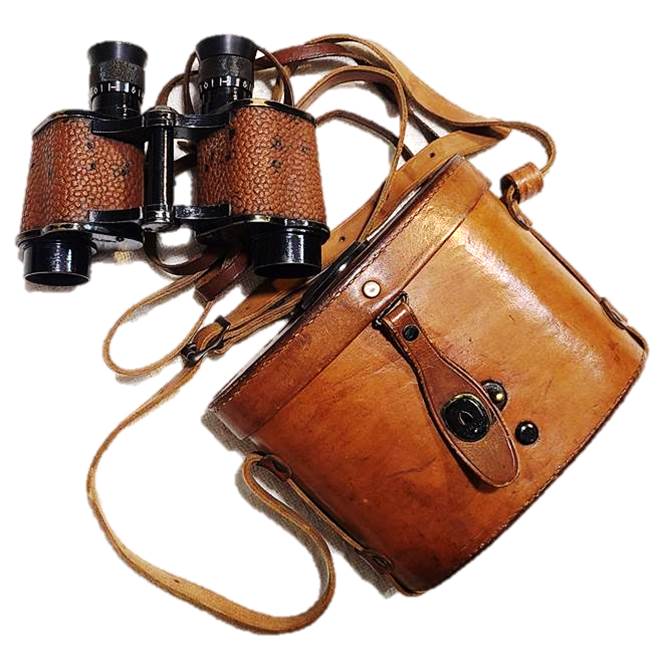
WWI-era Signal Corps binoculars
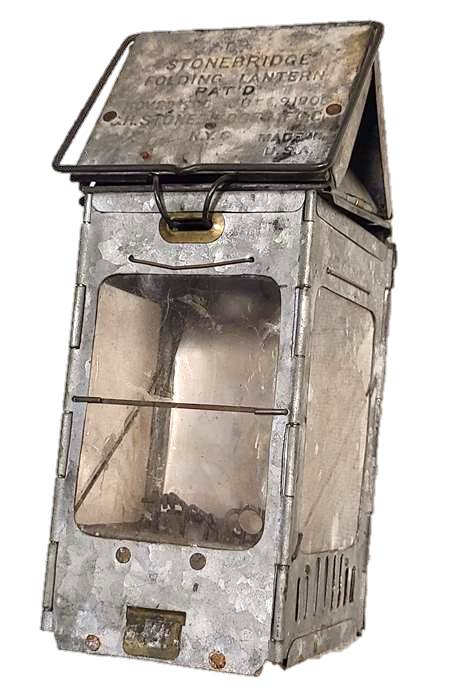
Folding trench lantern
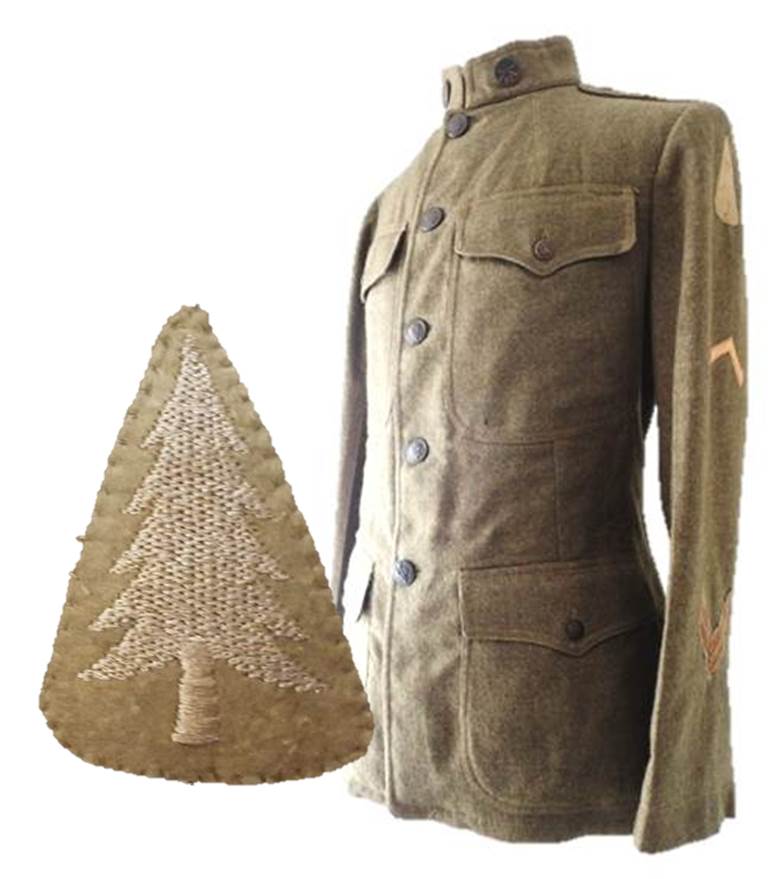
US wool uniform jacket. Collar discs indicated branch of service. On the shoulder is the patch of the 91st Infantry Division. Shoulder patches were first used in 1918.
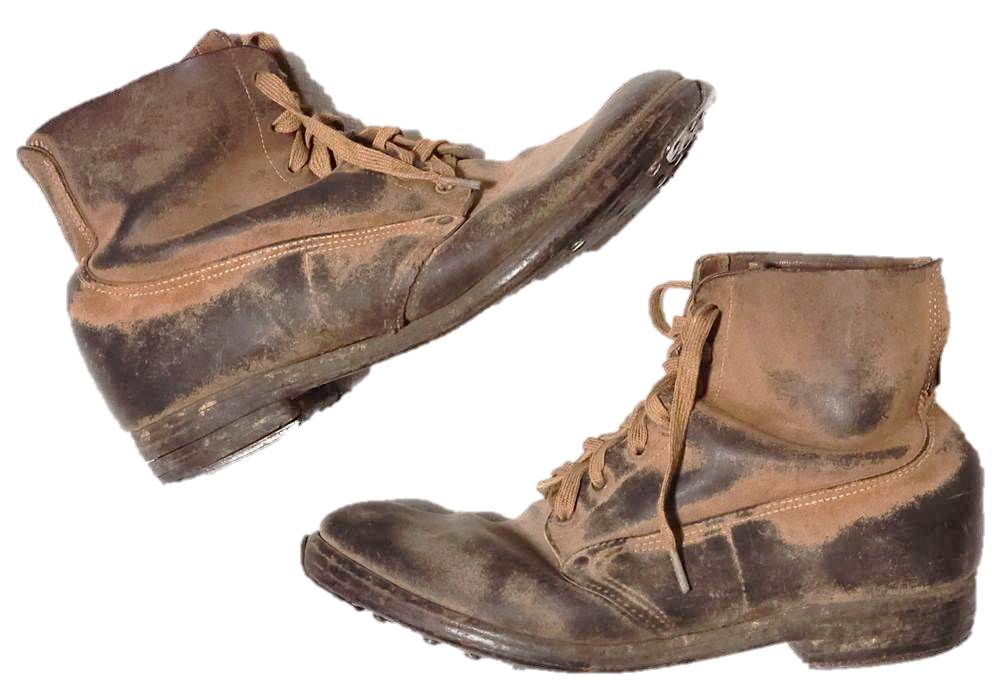
"Pershing" model trench boots
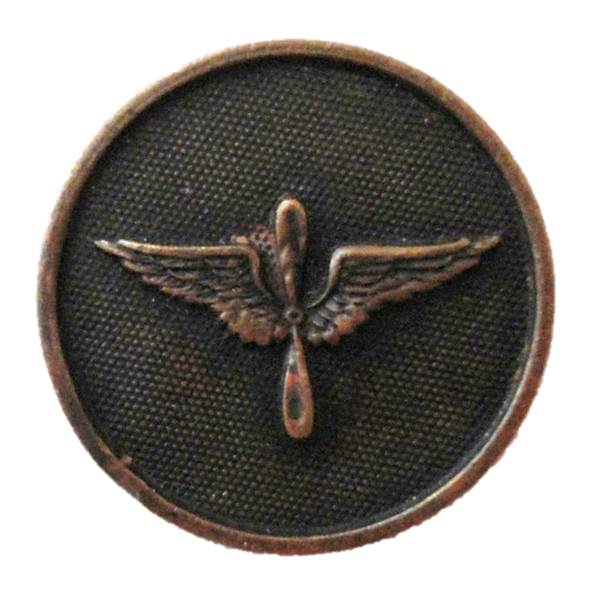
Collar disc for a soldier of the Aviation Section of the Signal Corps. This was the first Air Force of the United States.
A selection of US collar discs and a Quartermaster sergeant's stripes.
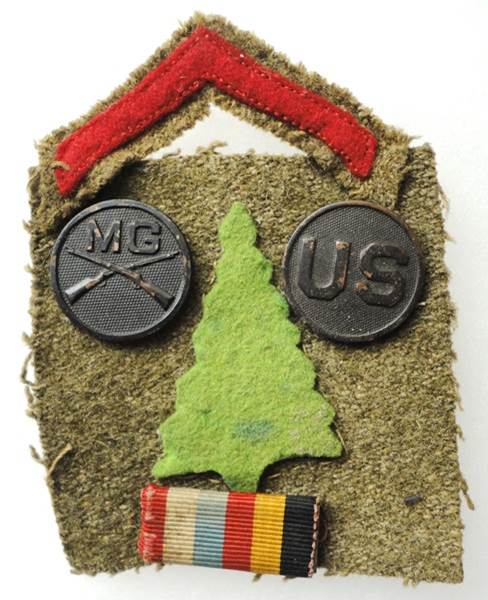
Patch and insignia from a veteran of the 91st "Wild West" division. Raised from the west coast, they chose the pine tree as their unit emblem.
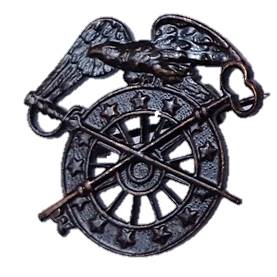
While enlisted men wore collar disc devices to distinguish their branch of service, officers had larger emblems that were not struck on discs. The officer's device above is for the Quartermaster Corps.
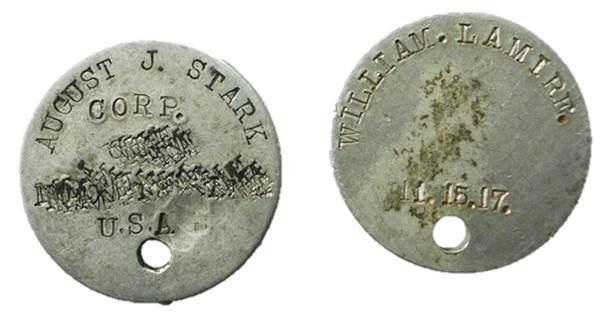
WWI identity discs worn by soldiers.
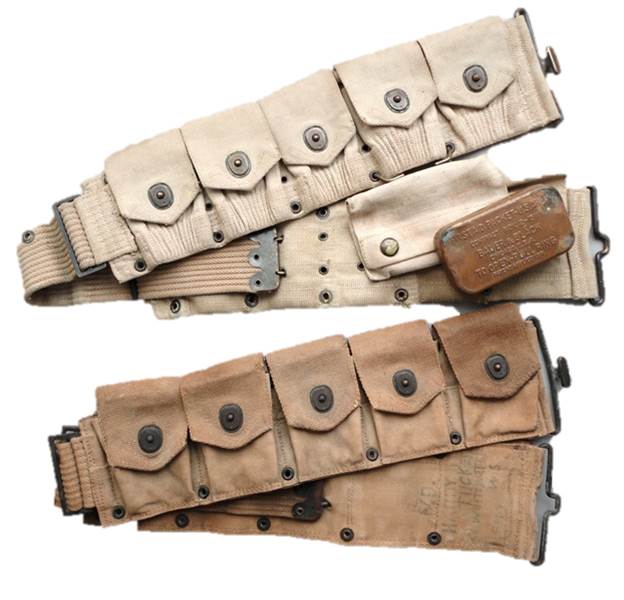
US ten-pocket cartridge belts. Each pouch held 5-round clips of bullets. The belt at top has a pouch and first aid tin attached.
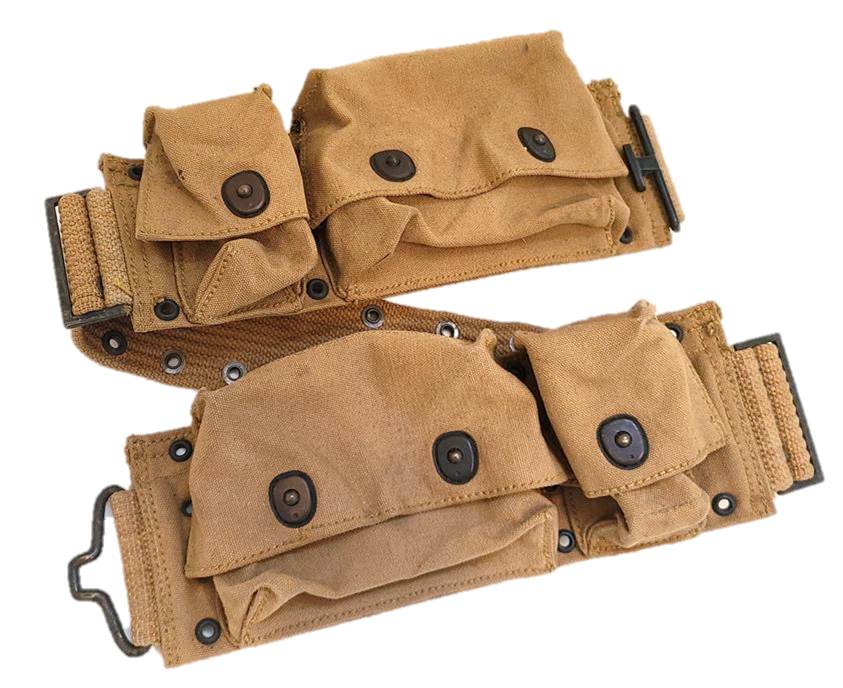
Medical Officer's belt, which had four pouches for carrying medical implements. This version is dated 1918 and likely unissued.
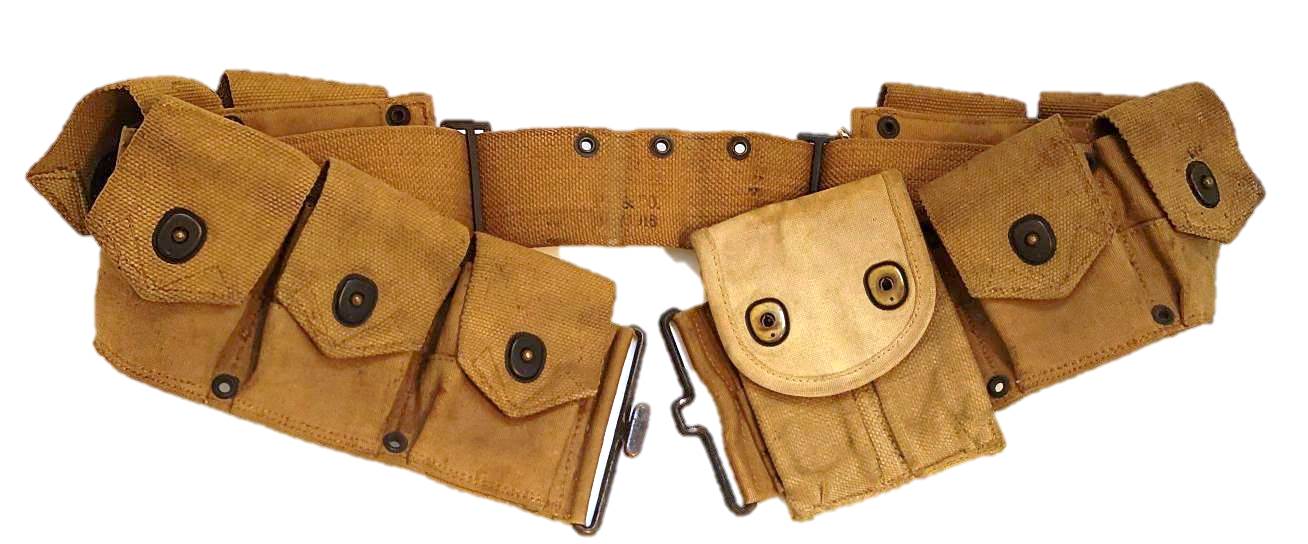
M1914 mounted cartridge belt for cavalry soldiers. This 9-pocket belt has space for a .45 pistol pouch. This version is dated 1916.
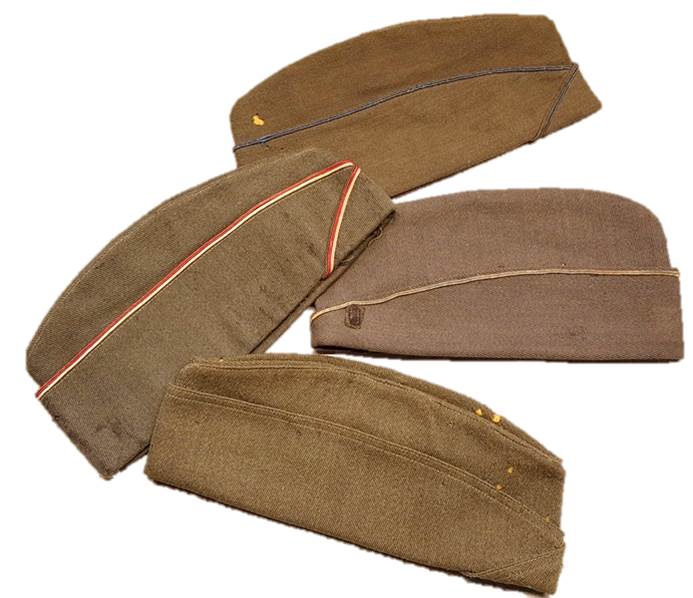
Various WWI garrison covers. In 1918 piping started to be sewn on to denote branch of service, and this remains standard today.
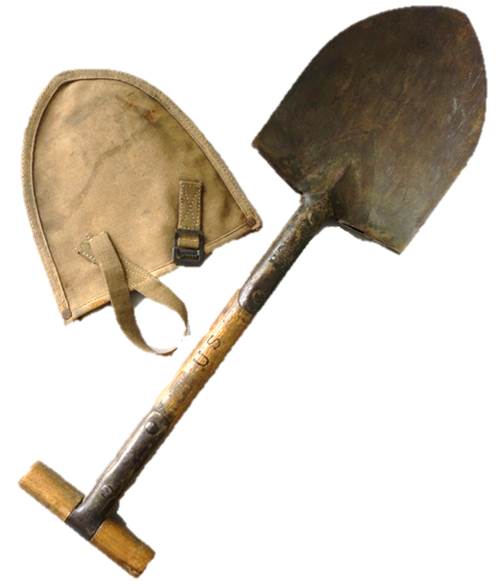
M1910 entrenching tool. This short shovel was carried as part of the standard infantryman's kit.
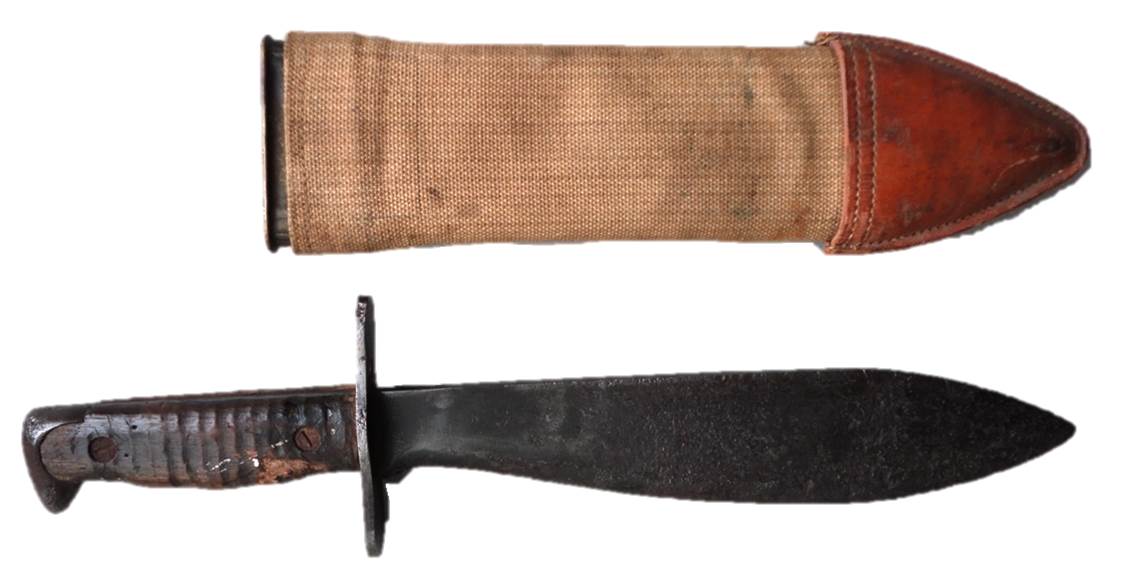
Bolo knife. This massive implement was issued for cutting away brush and earth, and not intended as a weapon.
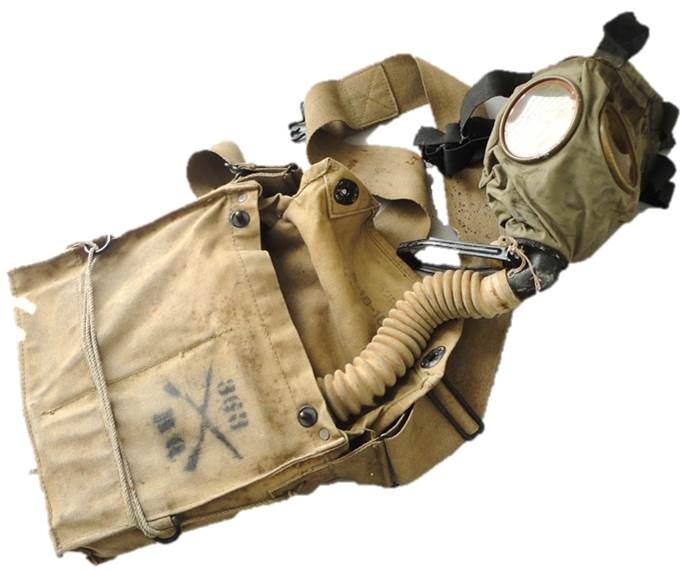
US gas mask and carrying pouch. A rubber hose led from the face to a charcoal filter canister in the pouch. This was worn high on the chest in the field, and slung across the shoulder when not in use.
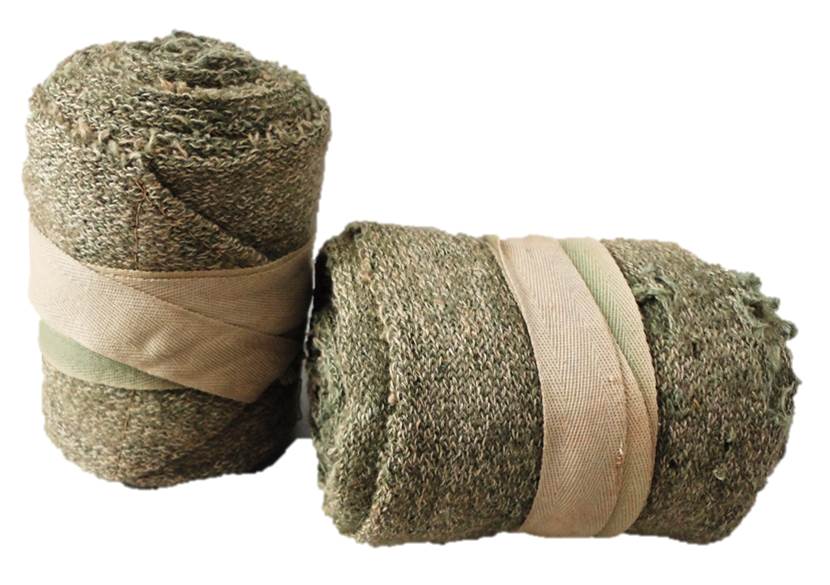
Wool leg wraps, called "puttees." These were worn in the trenches wrapped around the lower legs. They kept dirt off the skin but were easily changed and replaced when worn out, wet, or damaged. Trousers at the time typically ended below the knee.
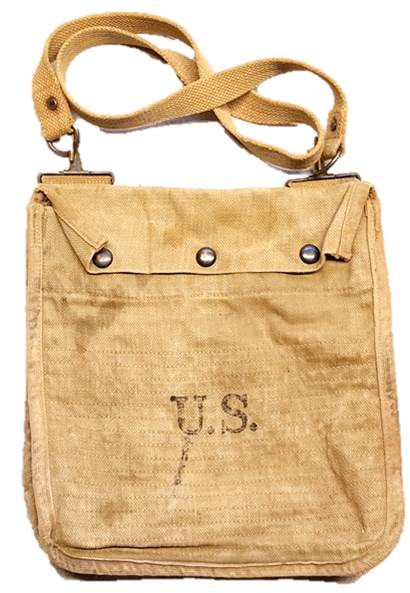
Grenade carrying bag with strap. It could be slung around the body or attached to a belt with hooks. This example is dated 1918.

Leather "jerkin" vest that added a layer of insulation and protection in the trenches. This example is likely British-made.
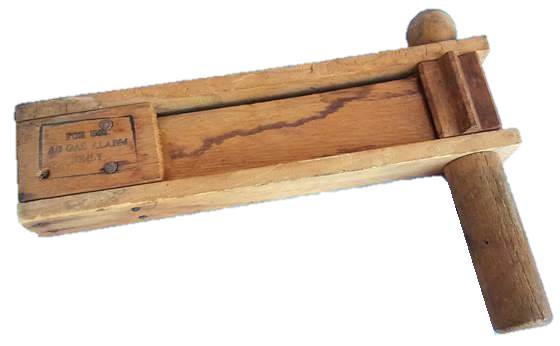
Gas alarm rattle that was used to signal a gas attack.
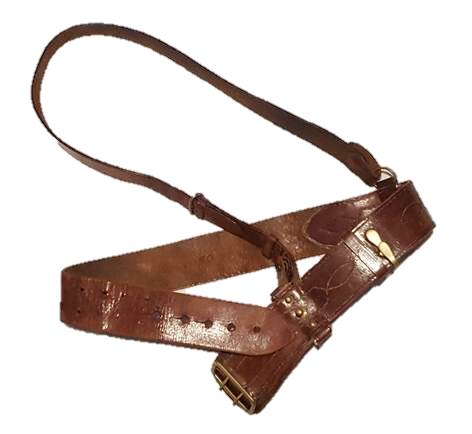
"Sam Brown" leather belt (top) and saber hanger attachment (below, French-made). While not US Regulation wear, officers often adopted these leather rigs from their British and French counterparts in Europe.
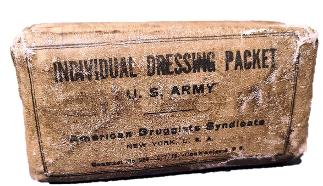
Field dressing packet, as carried by medics.
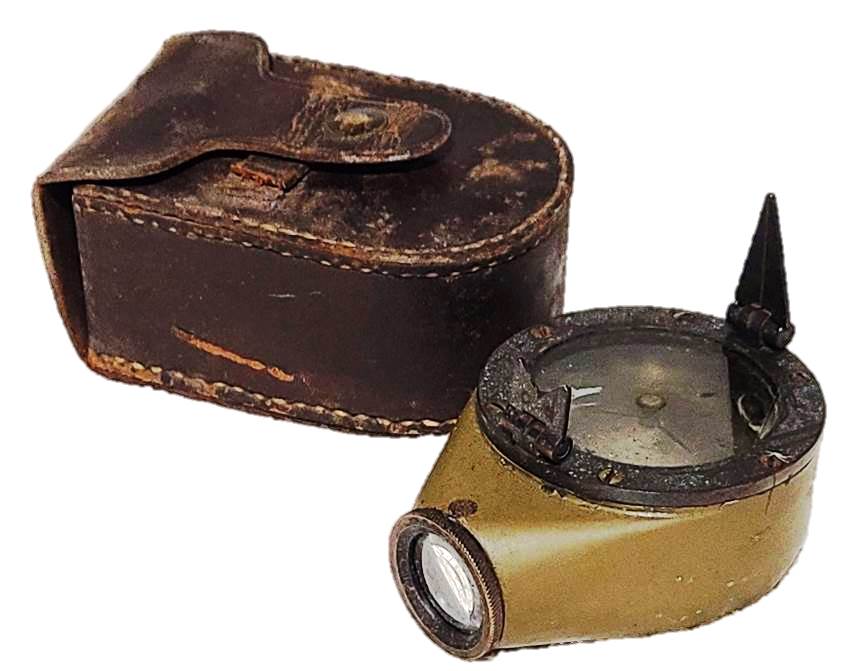
Mark VII marching compass
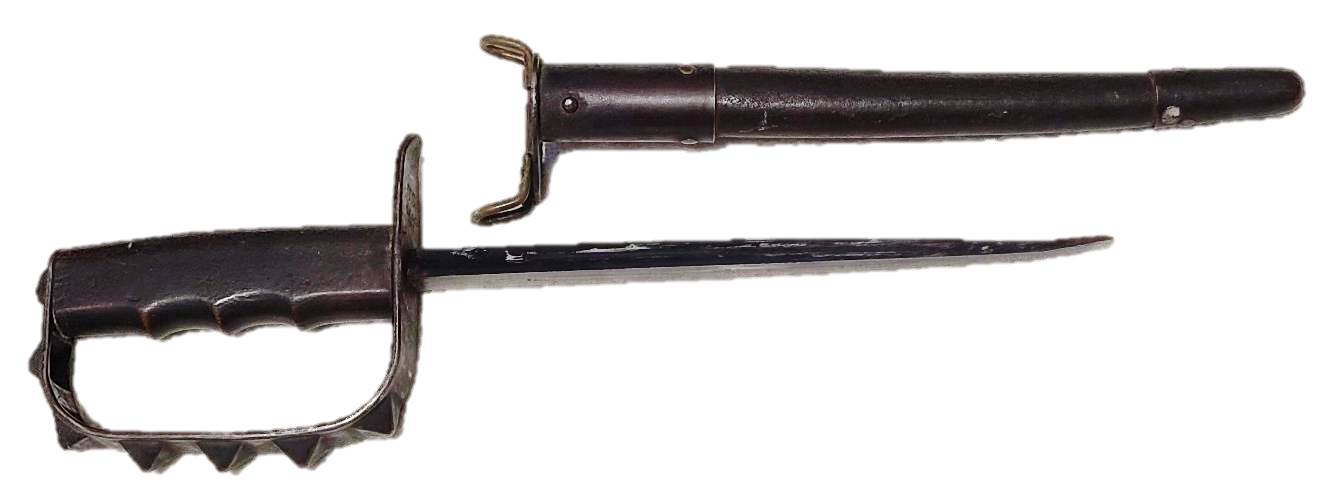
M1917 trench knife and scabbard. This was carried by an ambulance driver from Ohio.
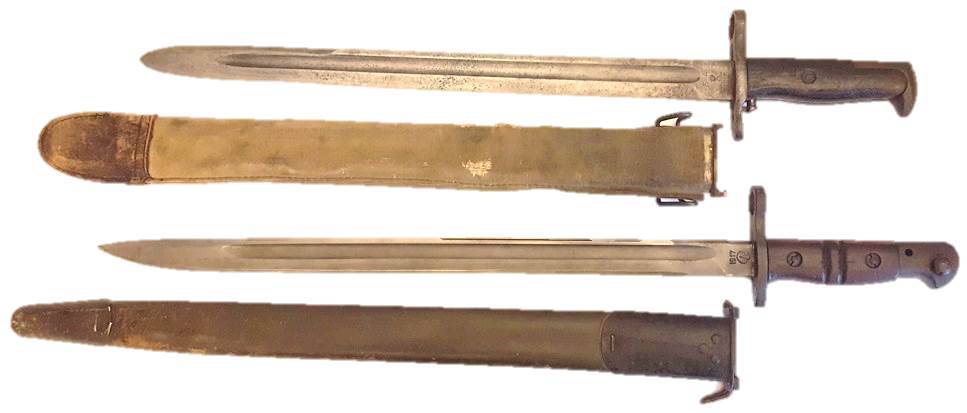
The two main bayonets carried by US troops in World War I. At top is the M1905 bayonet for the Springfield rifle; this example was made by Springfield Arsenal and dated 1918. The lower bayonet is the M1917, developed similar to the British P14, but intended for the Eddystone rifle. This example is a 1917-dated Winchester. The two notches in the handle are intended to distinguish it from its Commonwealth cousins.
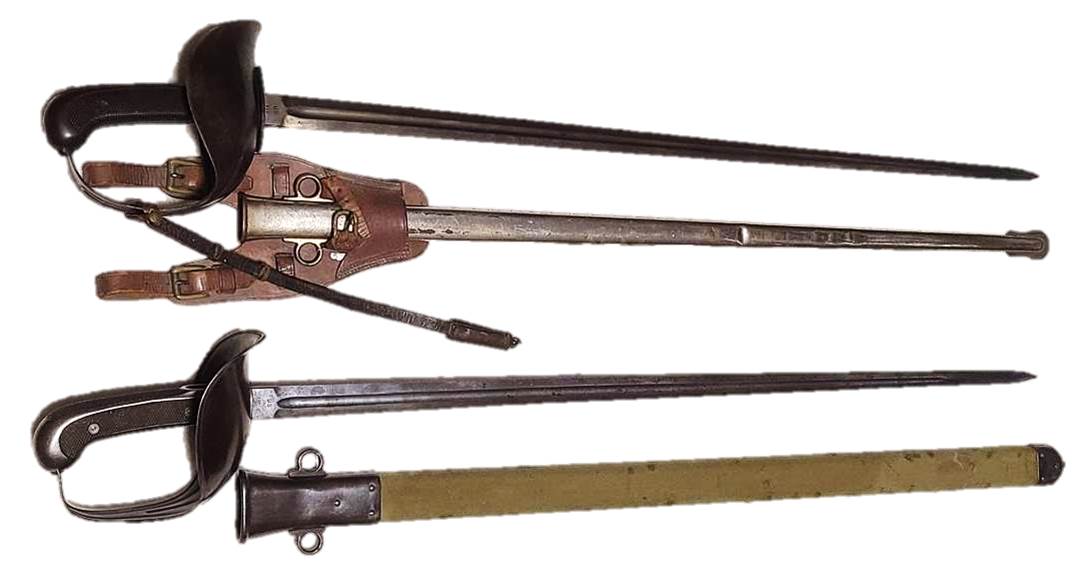
M1913 "Patton" sabers. Designed by George Patton, it is the last issued cavalry sword in US history. The top is a scarce early example, dated 1913, with serial number 616. It is complete with an early nickel-plated parade scabbard, carrier, and knot. The lower is a SA 1914 model with early scabbard with partially ground "tent pole" point.
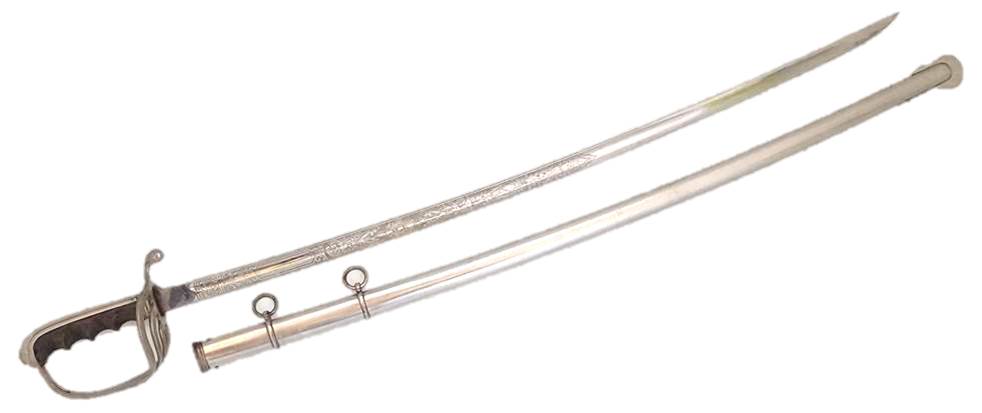
1902-pattern officer's saber. This WWI-era example has a handle made from horn.
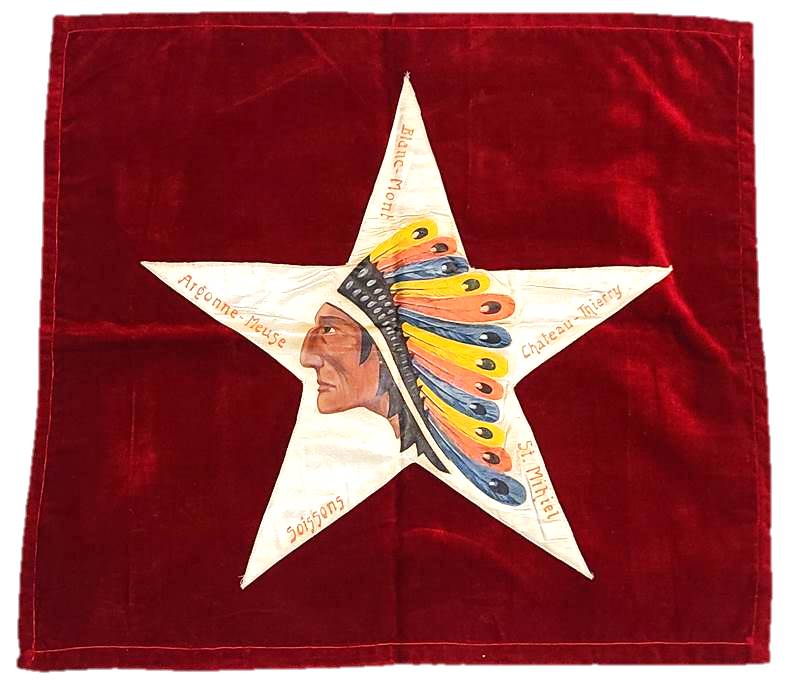
2nd Infantry Division souvenir, with hand-painted image and listing of battle honors.

20 pound Cooper Bomb, the first explosive bomb to be developed for use on aircraft.
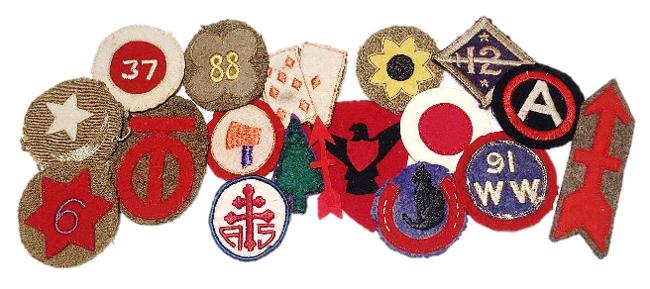
Assorted shoulder patches for WWI units. The practice of wearing individual unit insignia started late in WWI and is still standard today in the army.
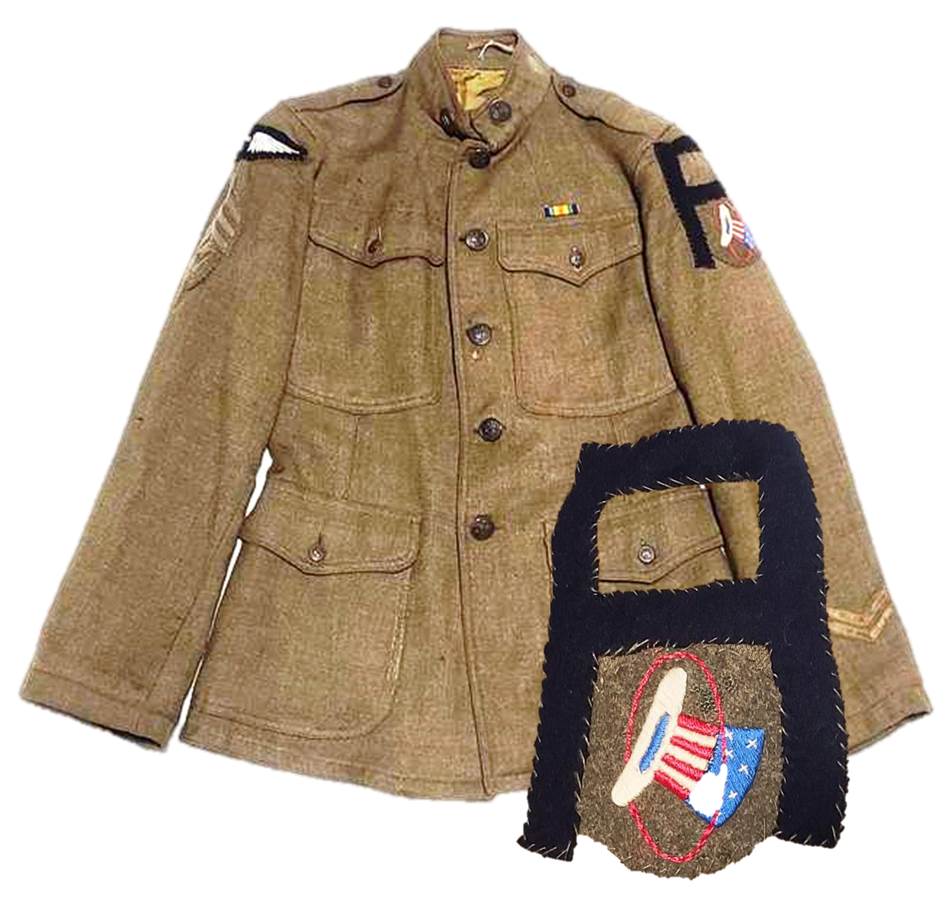
Enlisted uniform with insignia of the 94th Aero Squadron.
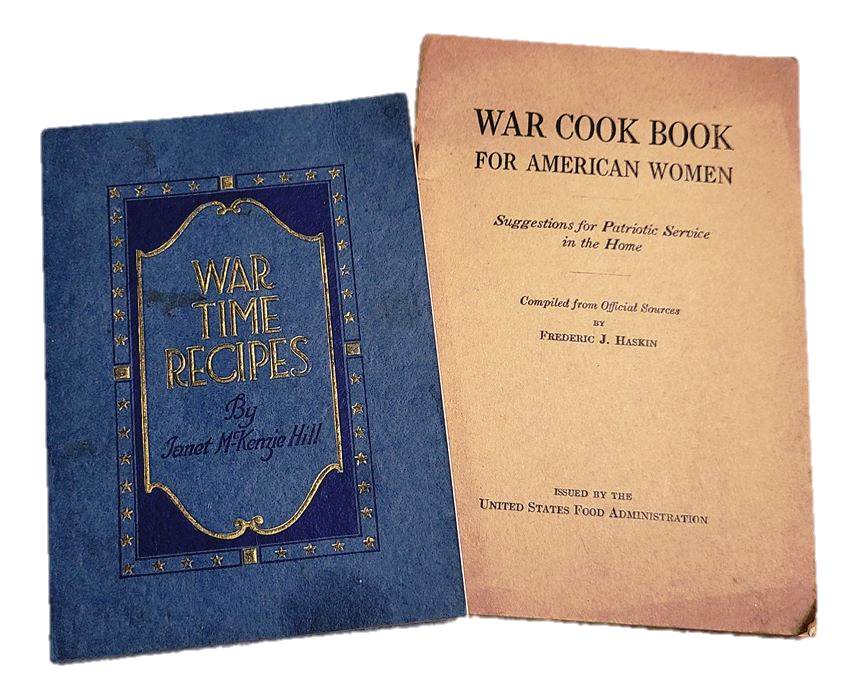
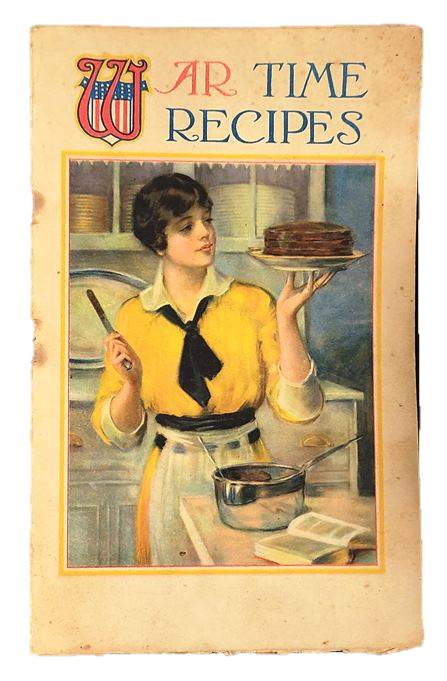
Wartime book books.
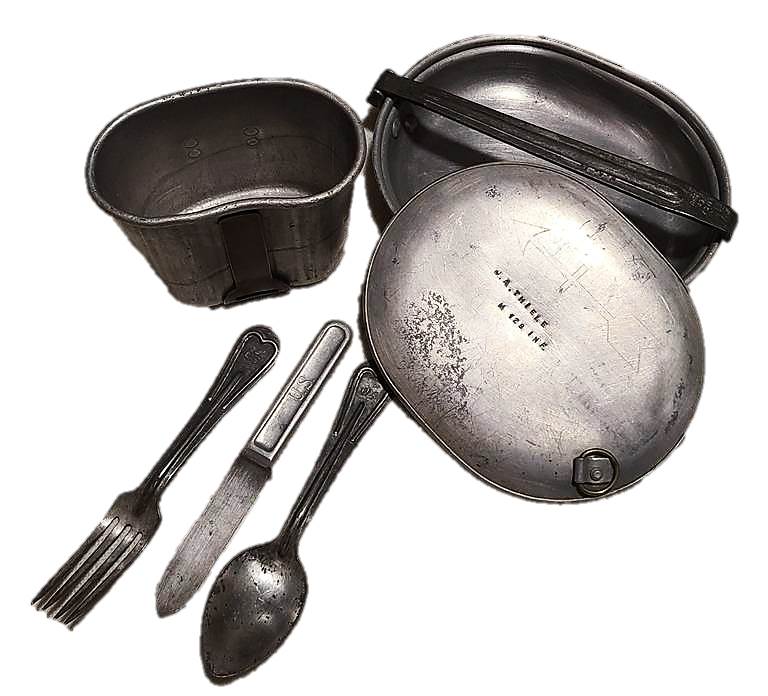
Mess kit and cup from a soldier of the famed 32nd "Red Arrow" Division. This soldier was from Janesville, Wisconsin, and next to his name he engraved the emblem of the 32nd on his meat can.
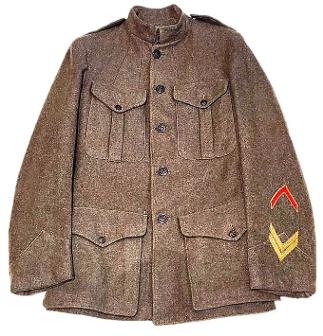
Forest green uniform of the US Marine Corps. The chevrons on the sleeve indicate a year overseas service and honorable discharge.
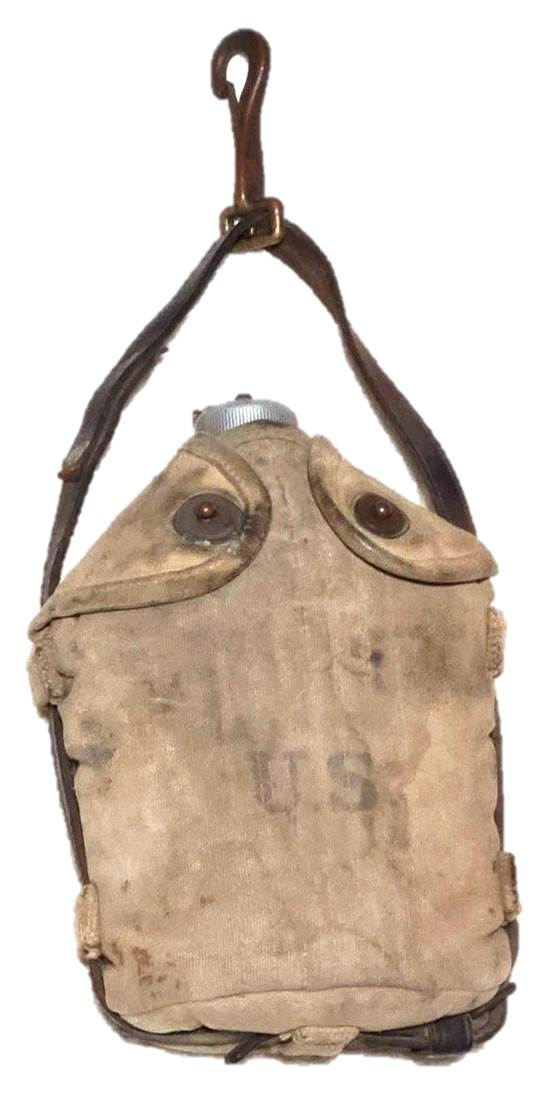
Mounted M1910 canteen and cover, dated 1918. These were intended for cavalry use.
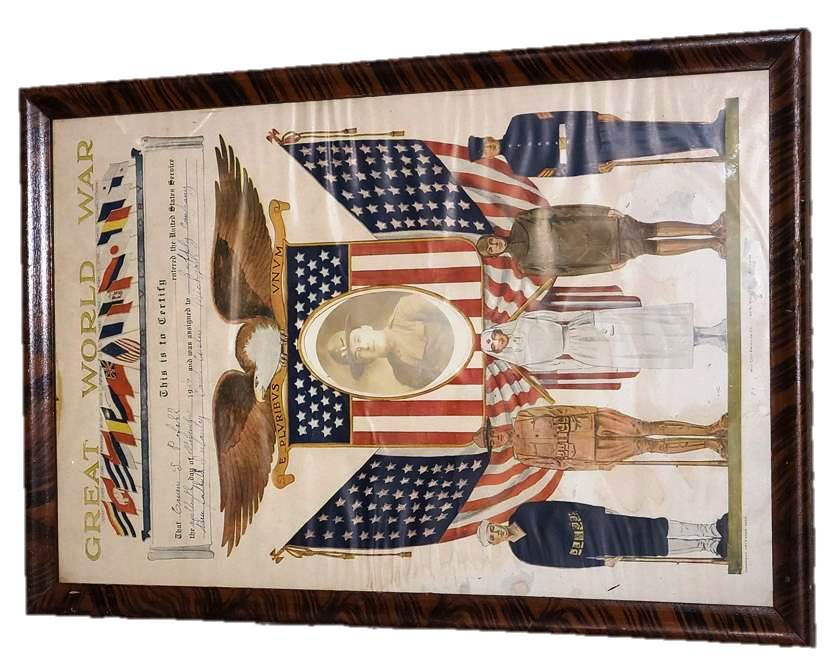
A Wisconsin veteran's souvenir document and photo.
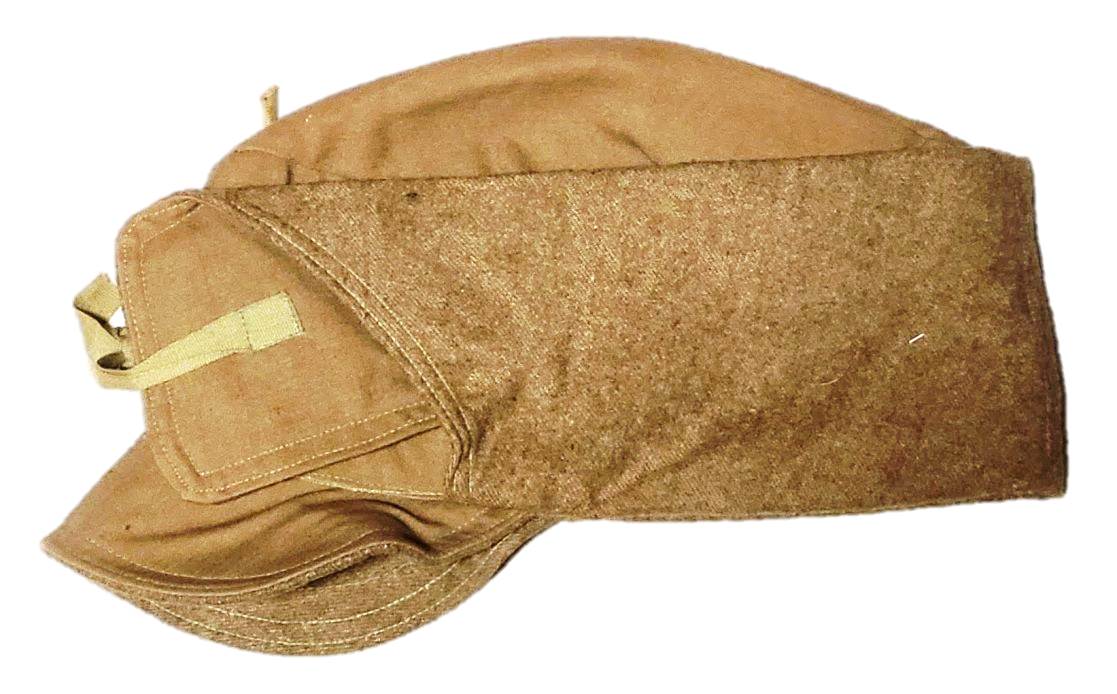
M1907 Cold Weather Cap.
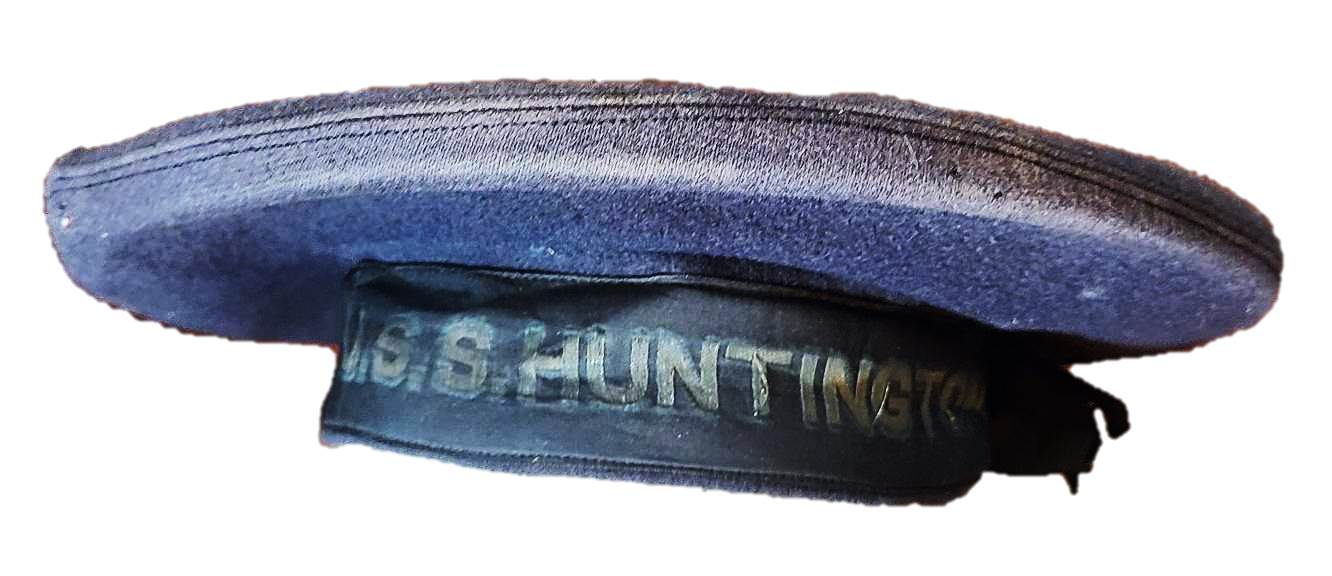
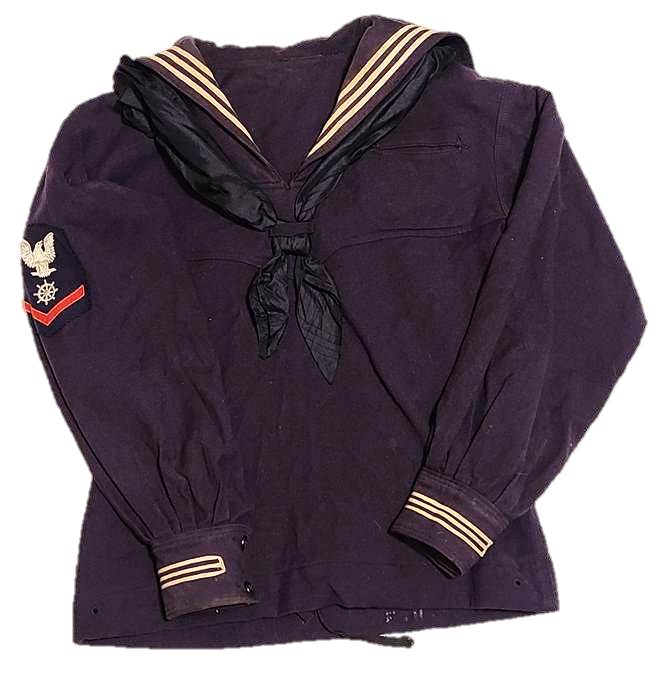
WWI sailor's cap and jumper with Boatswain's rate. The veteran was from Iowa and was at the University of Wisconsin when war broke out. He enlisted in Milwaukee and served on the USS Huntington, a heavy cruiser.
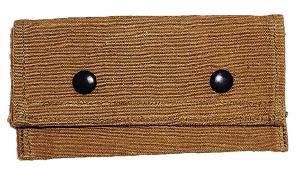
Pouch for medical diagnostic tags, as carried by medics
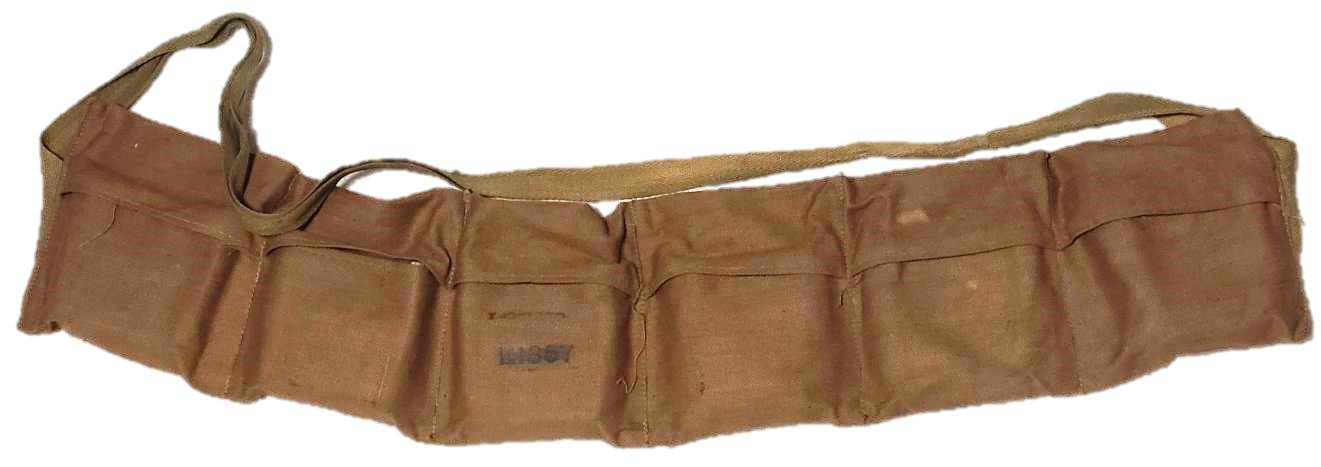
Bandoleer for rifle cartidges.
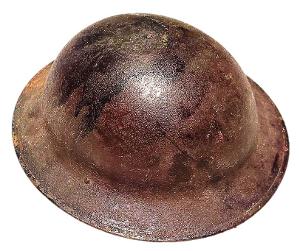
Trench-painted helmet. The original finish has been overpainted with green, maroon, and brown.
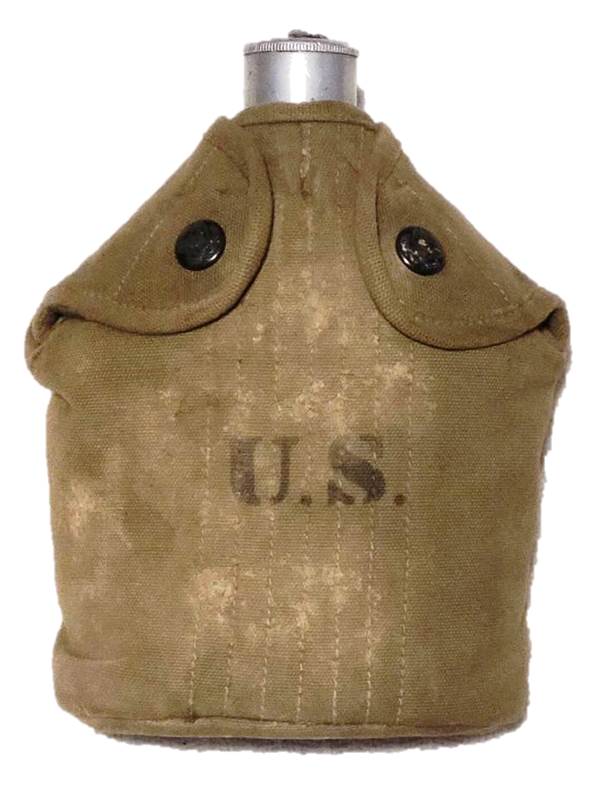
Early "Eagle Snap" canteen with flat cap--a scarce example. This was carried by a Racine, Wisconsin veteran.
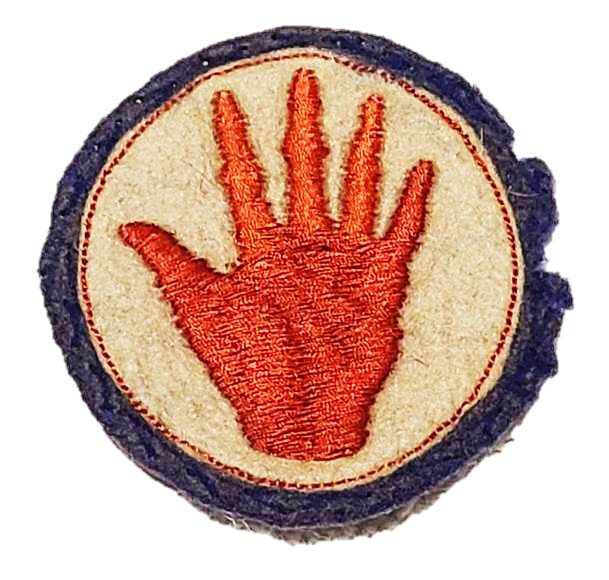
Shoulder patch of the 371st Infantry Regiment, which was comprised of African-American soldiers
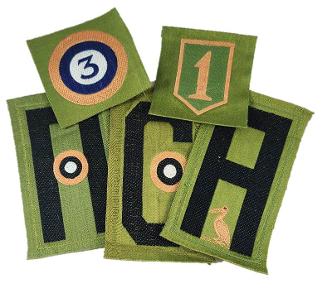
Liberty Loan patches. These were made to sale in War Bond drives, but there is evidence that some were also sourced and worn on uniforms by returning soldiers.
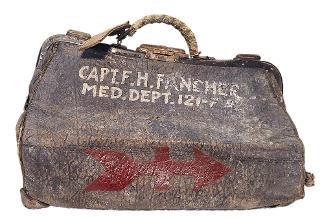
Medical bag from an officer in the 32nd Infantry Division.

"Yard long" unit photo of Battery A, 120th Field Artillery, of the 32nd Infantry Division. Battery A was formed in Milwaukee from the Wisconsin National Guard.

"Call to Arms" 1917 unit roster for Troop A of the 1st Wisconsin Cavalry. This unit later became the 120th Field Artillery.
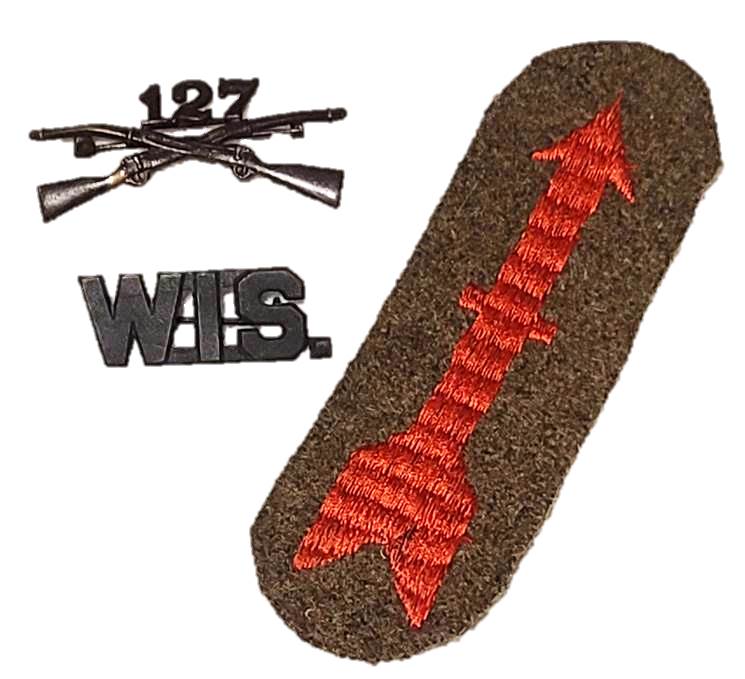
Insignia for the 127th Infantry Regiment of the 32nd Infantry Division.
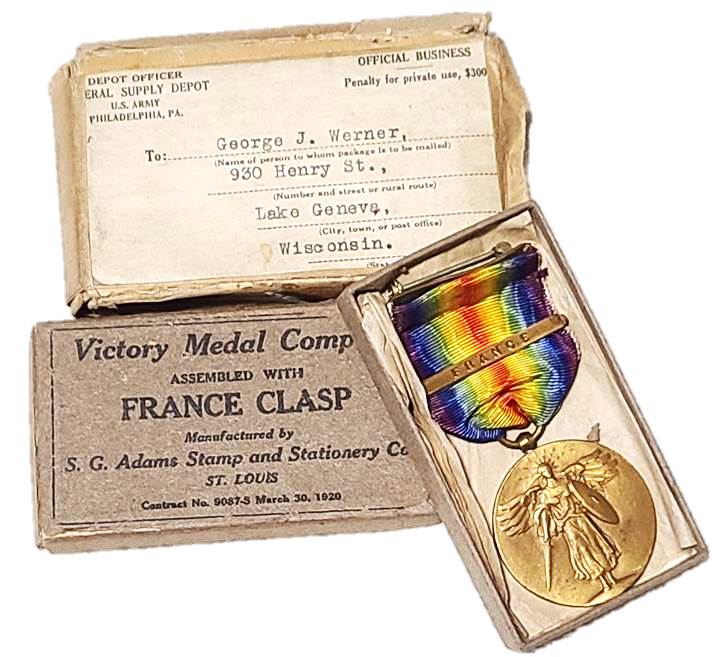
WWI Victory medal mailed home to a Wisconsinveteran of the 86th Infantry Division.
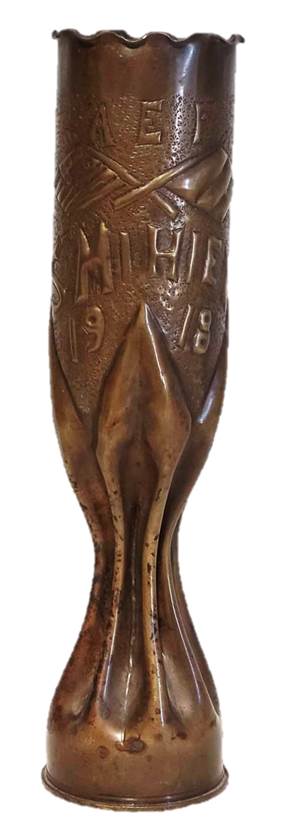
Souvenir trench art 75mm shell
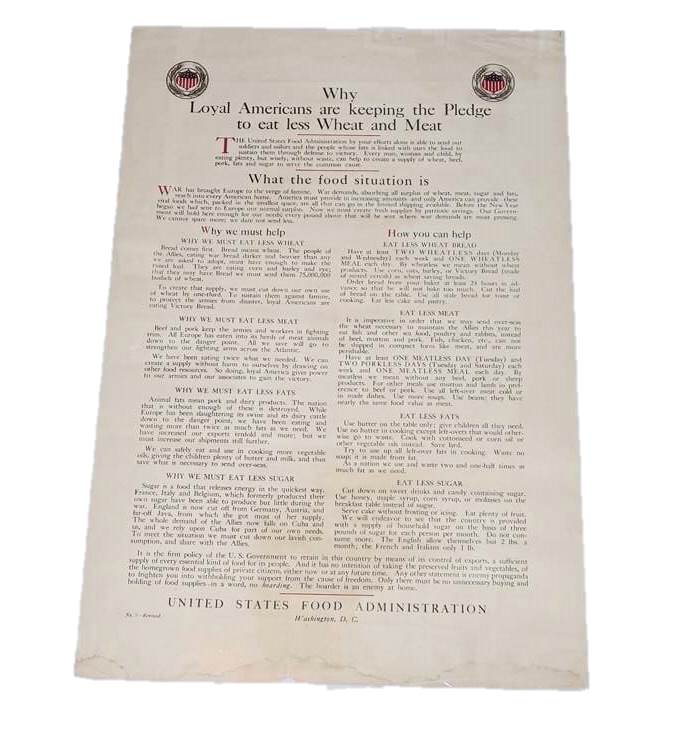
Home Front poster encouraging thrifty use of meat and wheat
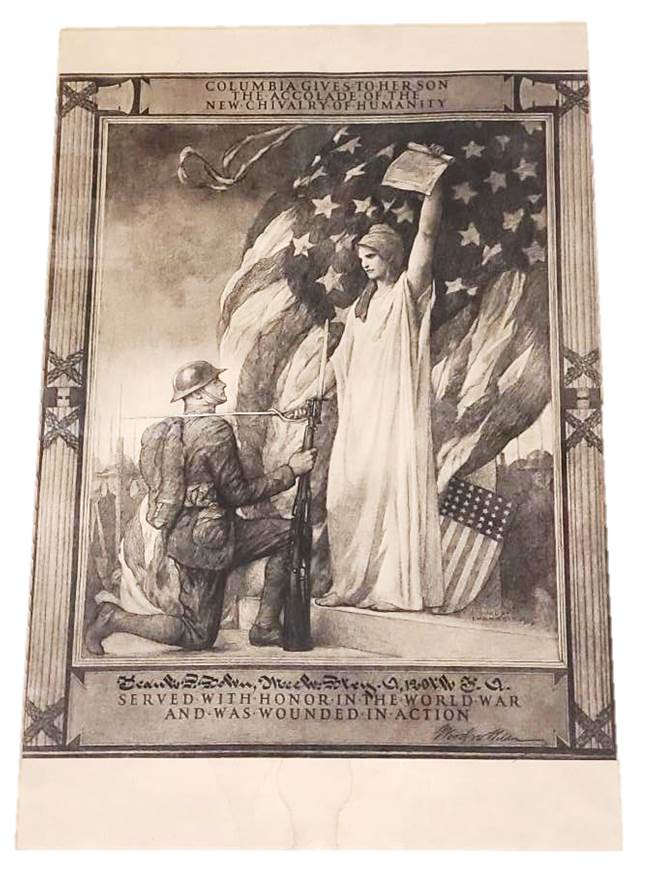
A wound document to a soldier of the 120th Field Artillery (32nd Infantry Division), who was wounded in France. This soldier was from Racine, Wisconsin.
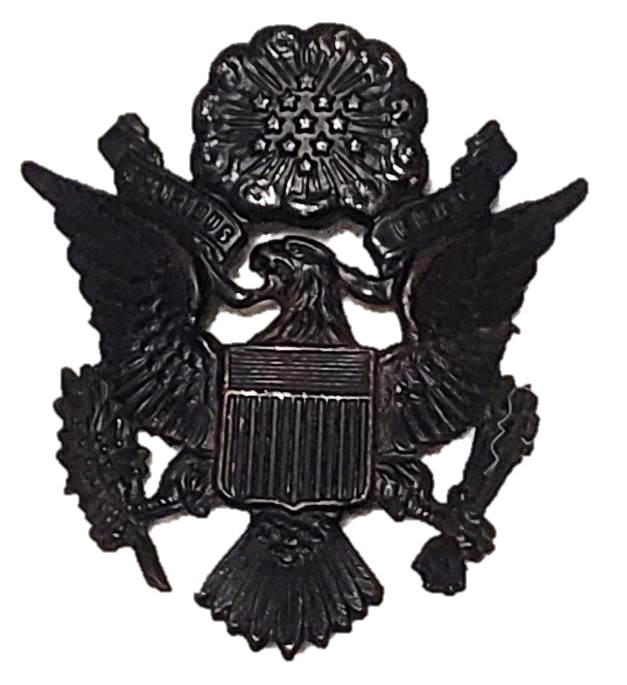
Officer's cap insignia
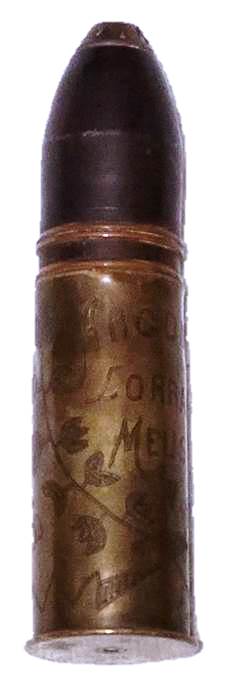
Souvenir trench art 20mm shell
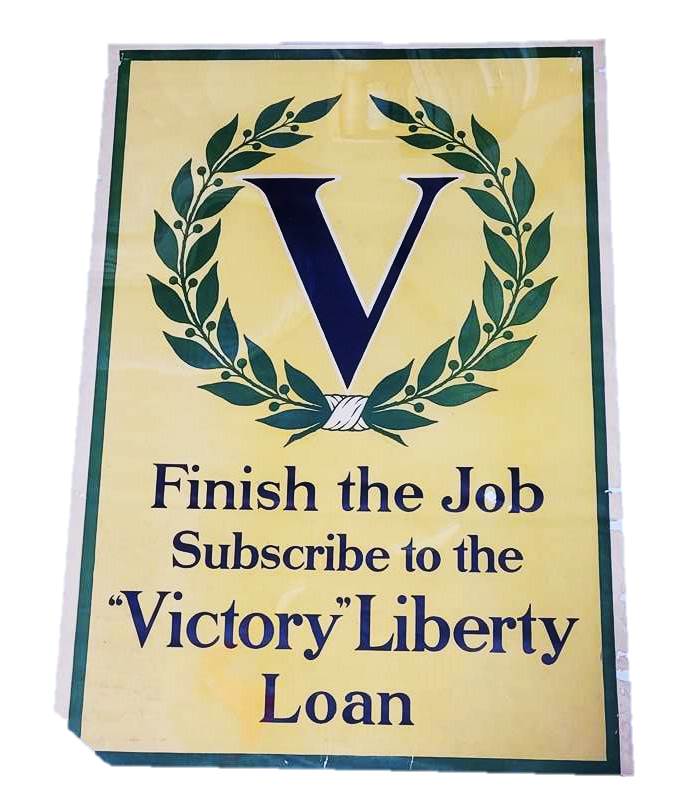
Fifth Liberty Loan poster
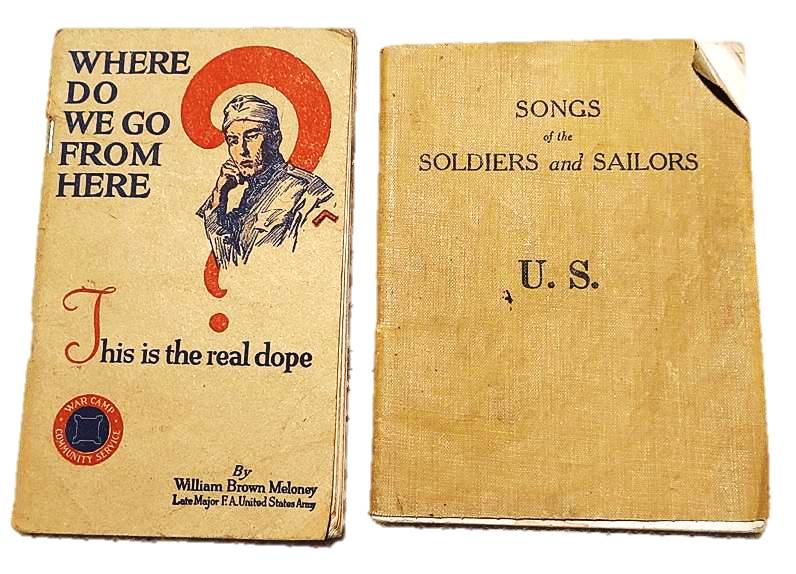
Two WWI publications--one for the military, and the other for those being discharged.
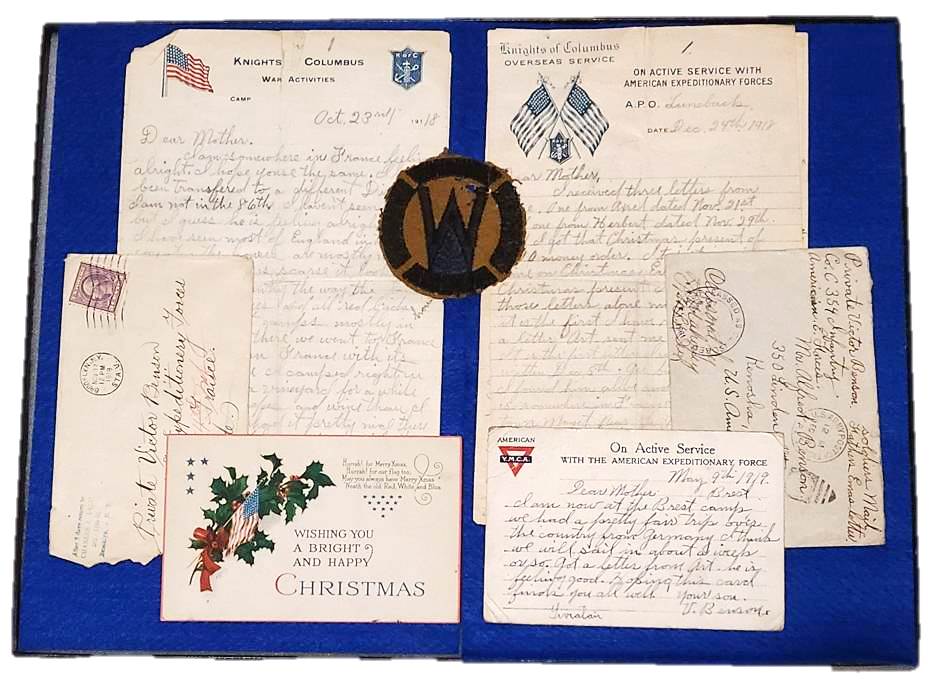
Collection of letters from a Wisconsin veteran of the 89th Infantry Division, including a shoulder patch.
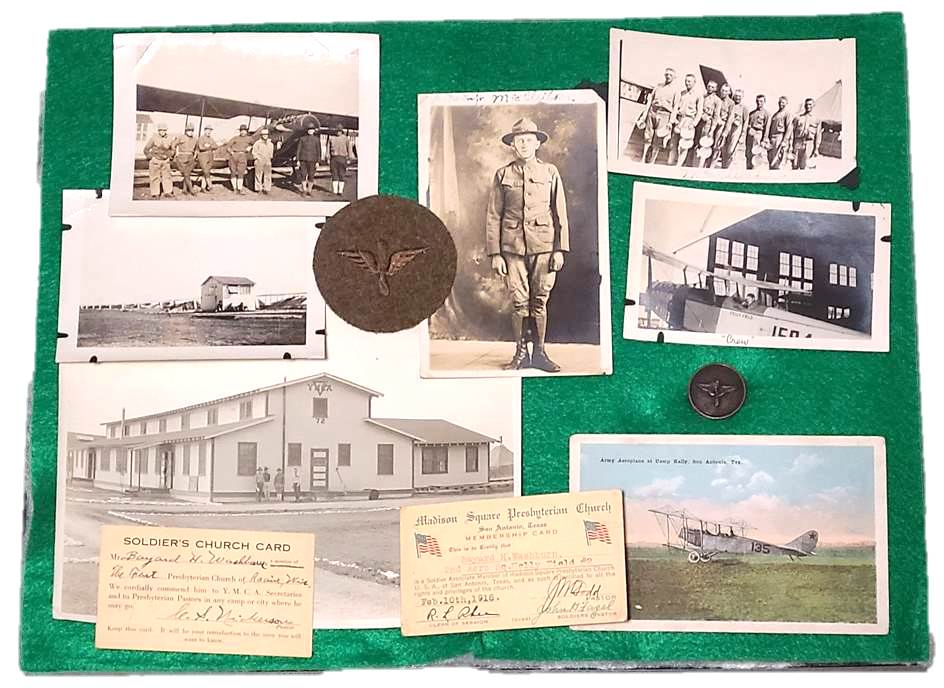
Photos and insignia of a Wisconsin veteran who served in the early Aero Squadrons that pioneered the development of aircraft for military use. He was stationed in Texas.
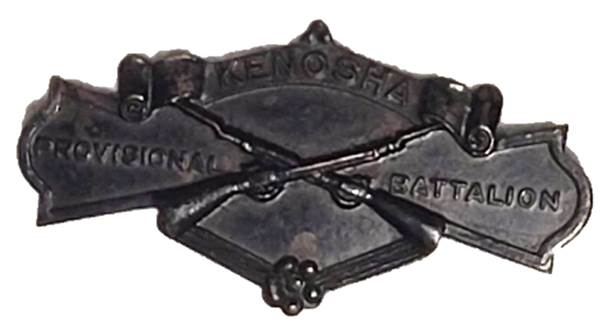
Interesting badge worn by the Kenosha Provisional Battalion, c. 1917-1918 in Wisconsin. This volunteer group was raised for local duties after the National Guard was transferred to Federal service.
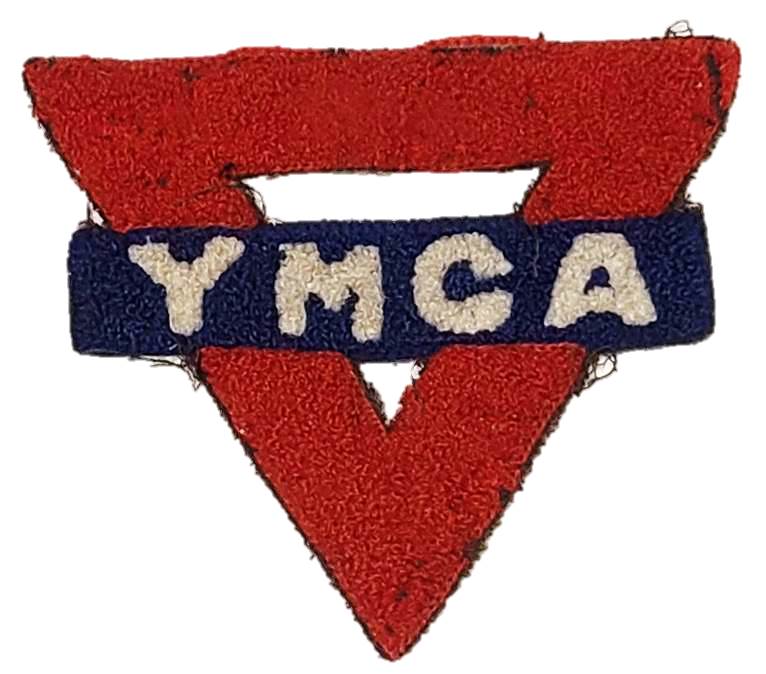
The YMCA mobilized for the war as well, providing accommodations, refreshment, and entertainment for soldiers both at home and abroad. This is an early YMCA patch.
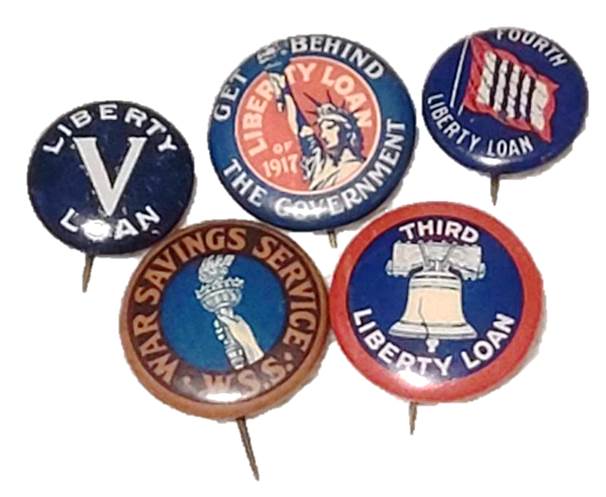
Various war bond support pins, as worn on the Home Front.

A 1917 Executive Order required German nationals to register with the US government. This is a scarce card issued to a woman.
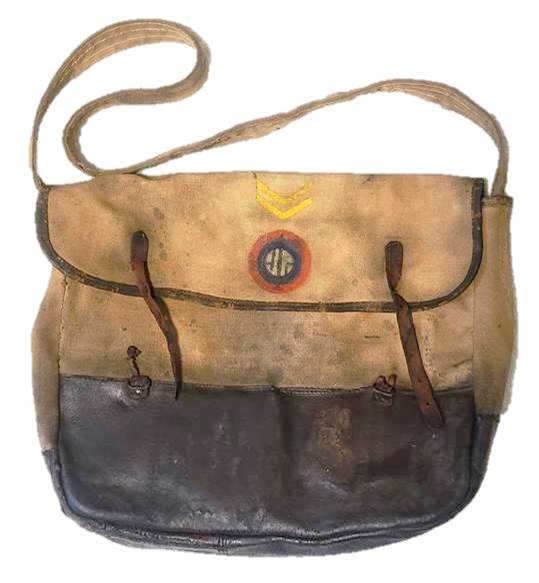
French-made satchel used by an Air Service veteran. Note the painted roundel and service stripes on the flap.

Victory medal from Racine, Wisconsin.
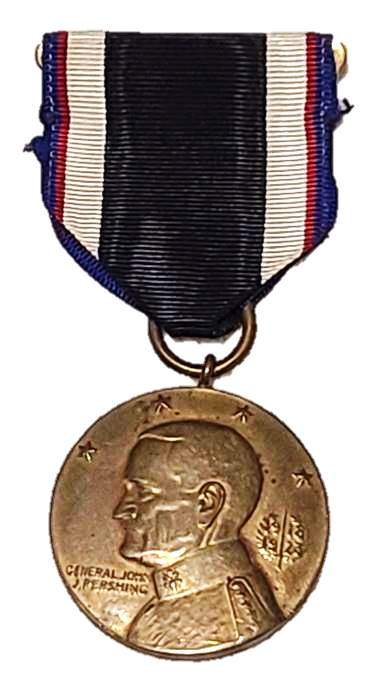
Army of Occupation of Germany medal, with the likeness of General Pershing on it. These were approved in 1941 and awarded to those that served in the postwar Army of Occupation in Europe between 1919 and 1923.
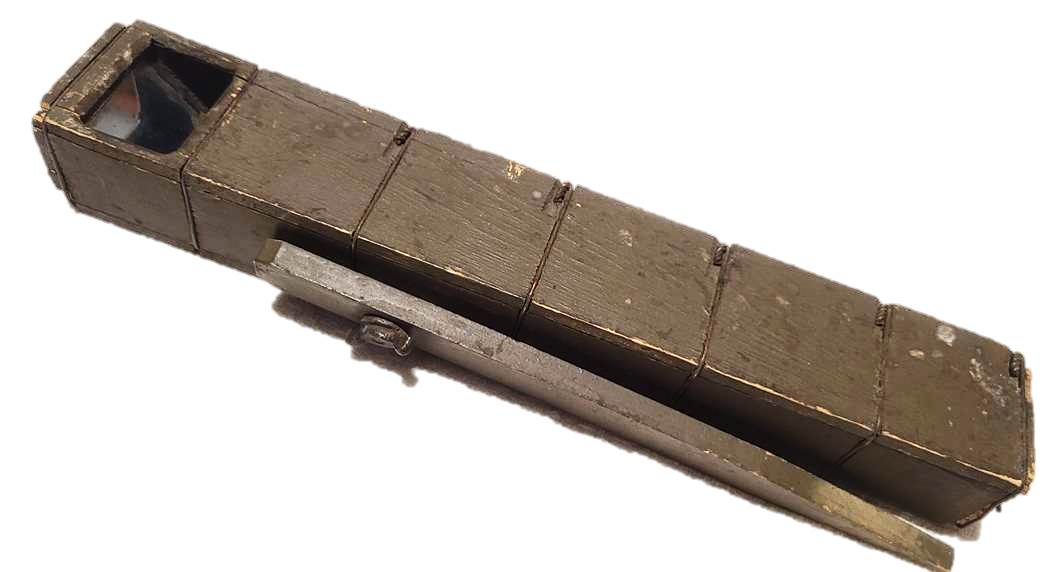
Trench periscope
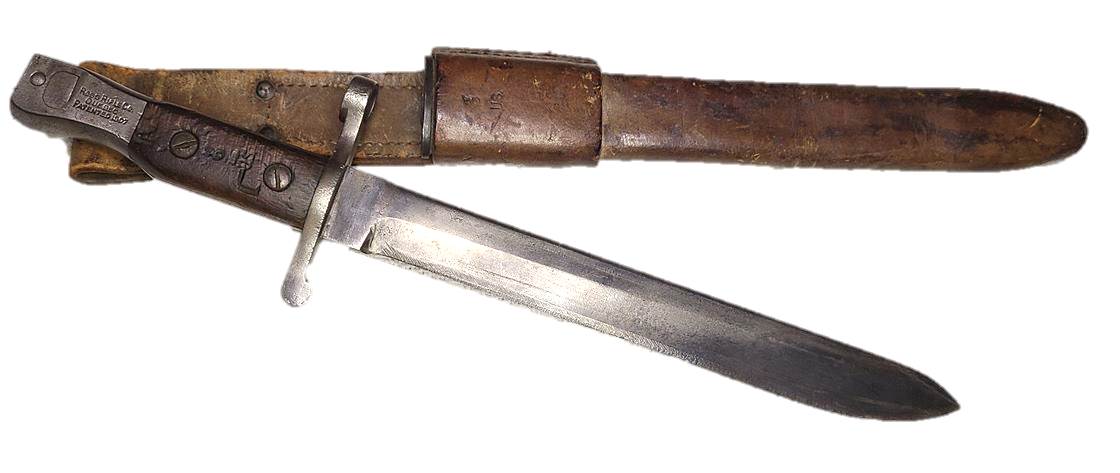
M1910 Ross bayonet, developed for the Canadian Ross rifle. The US imported 20,000 during WWI for training purposes. This bayonet is US marked.
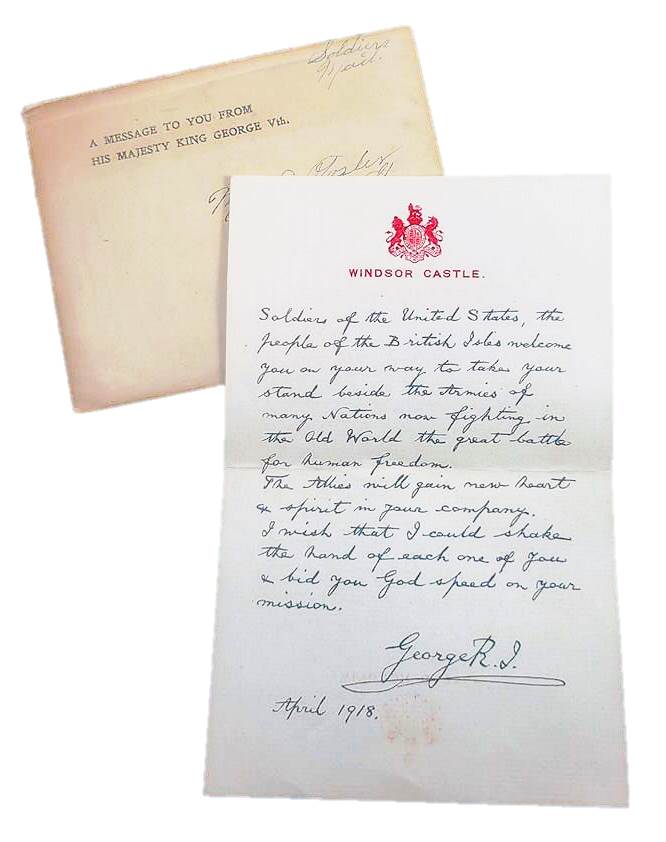
Scarce letter from King George of England to US troops who passed through Britain. This one was given to a Michigan veteran of the 339th Infantry, part of the famed "Polar Bear" North Russia Expedition. The vet served in russin from September 1918 through August 1919.
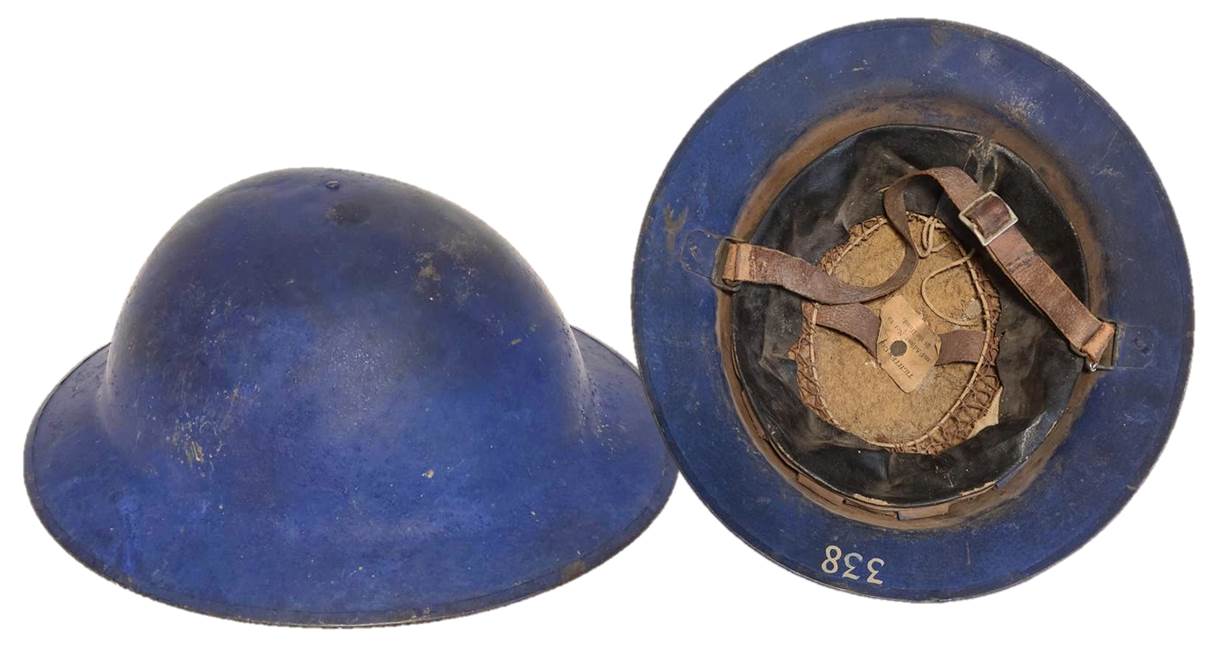
An interesting piece of post-WWI history: a repurposed WWI British Brodie helmet. This example was used by Police and National Guard soldiers responding to the labor strike in Kohler, Wisconsin, in 1934. Painted blue, the helmets were then stored by the city until rediscovery and sale some years ago.